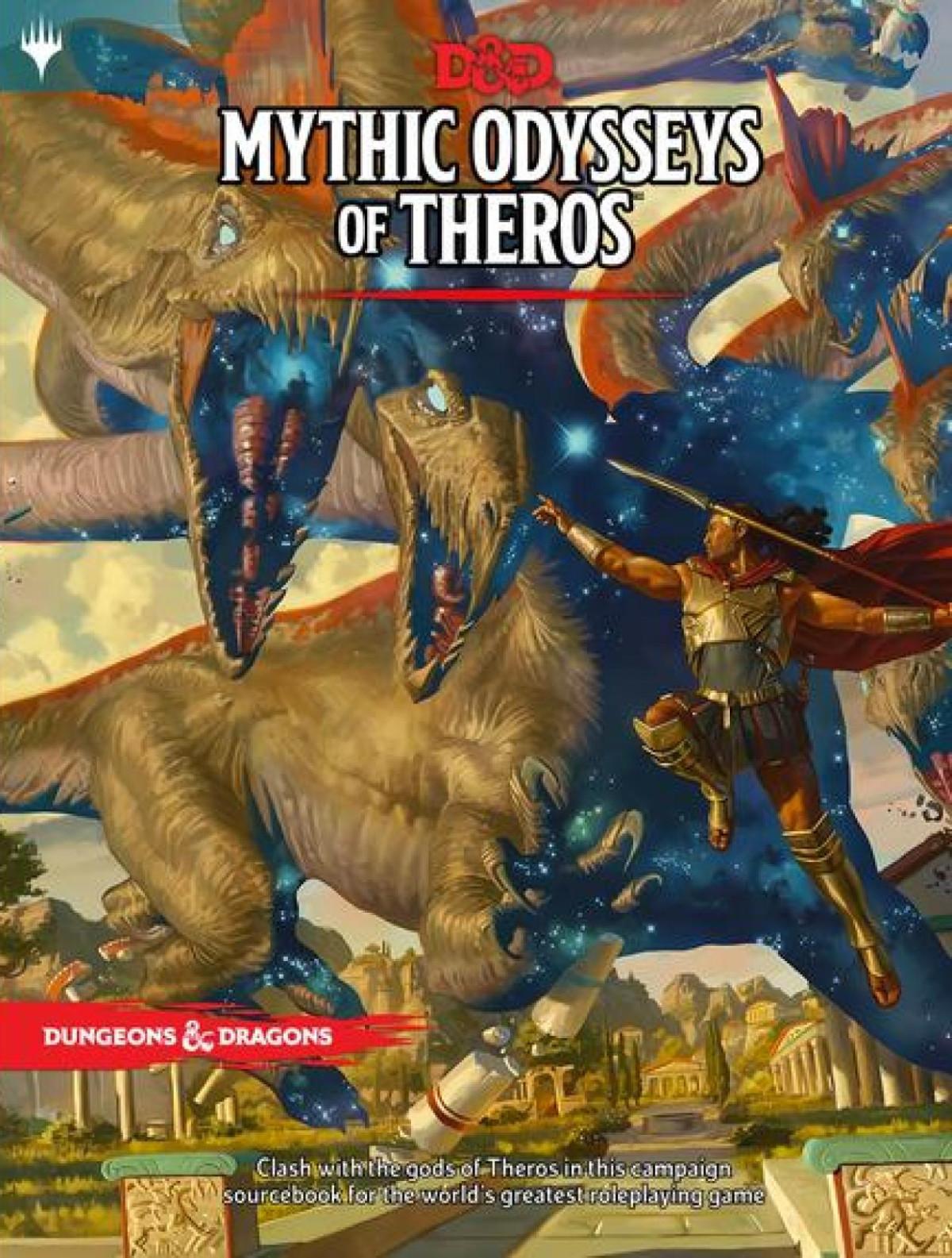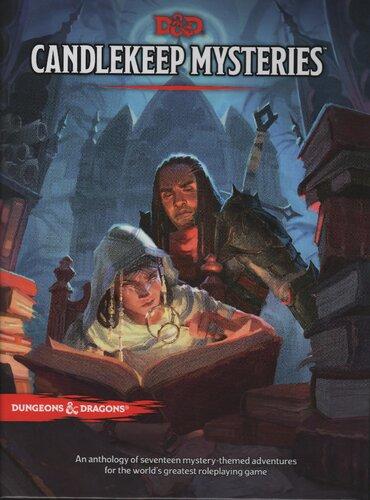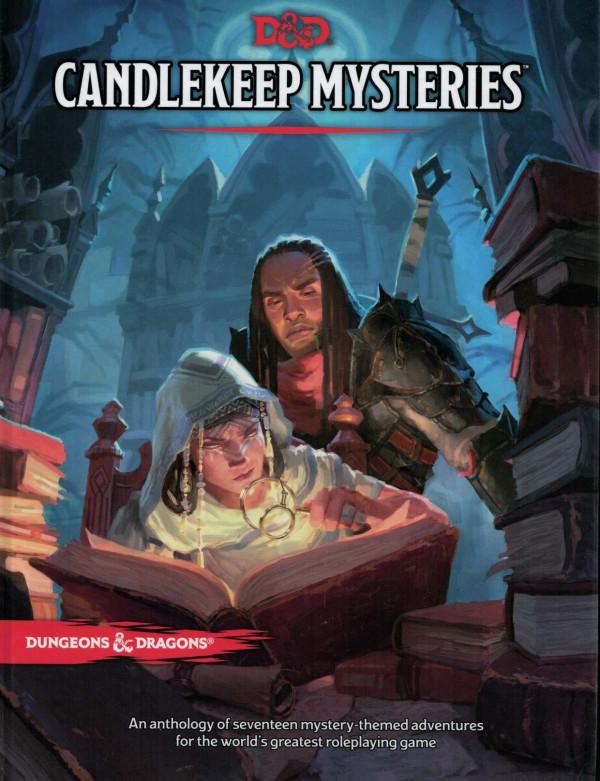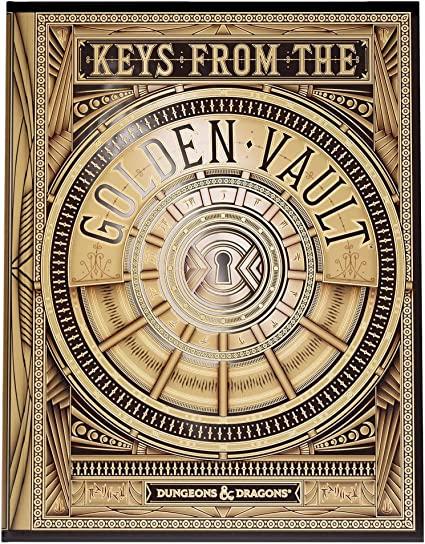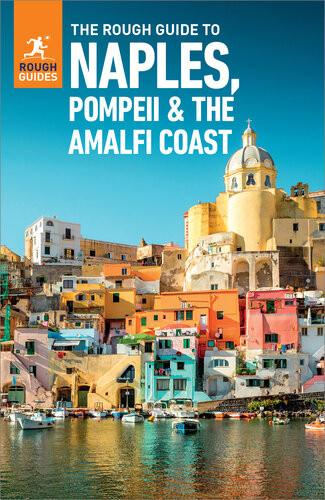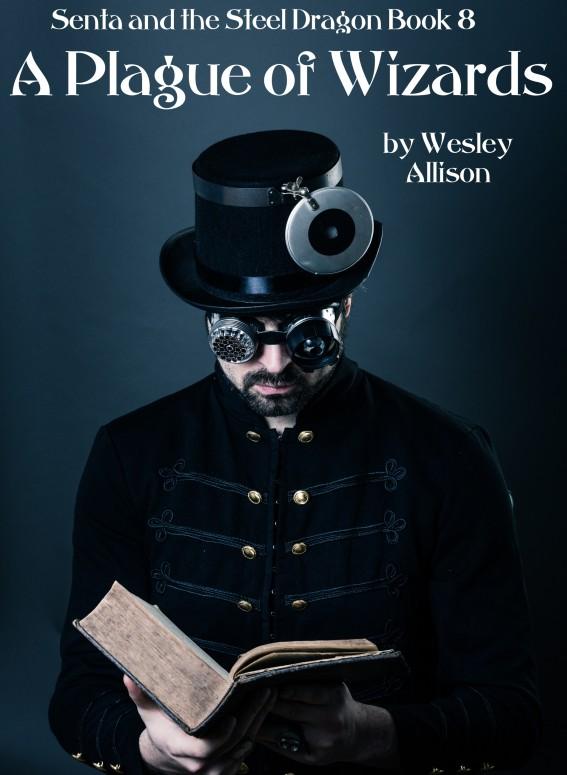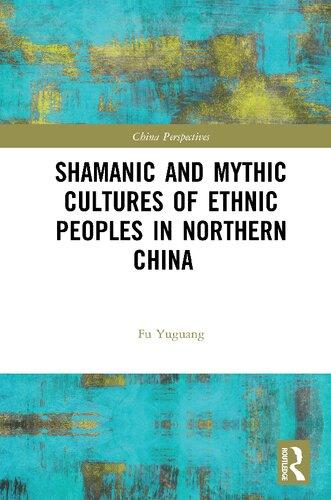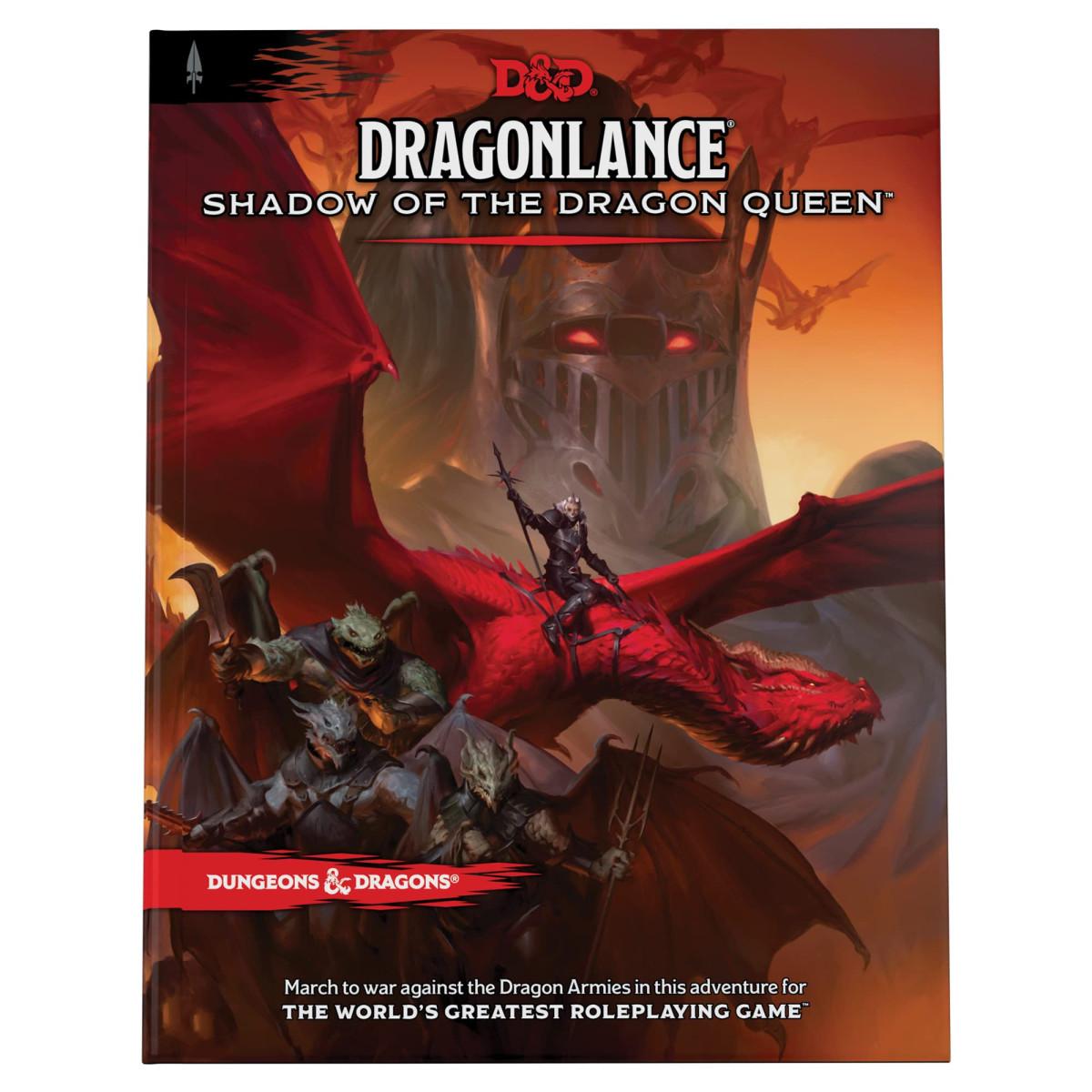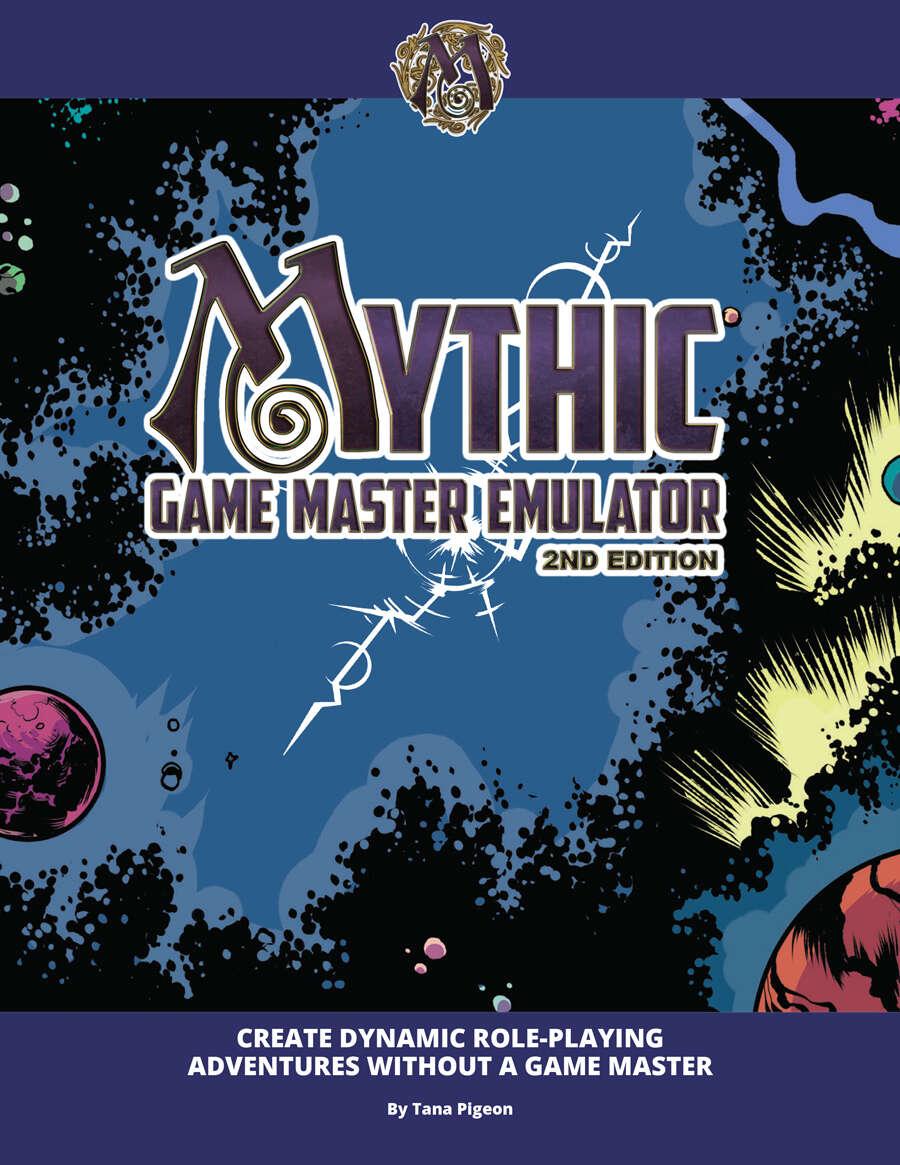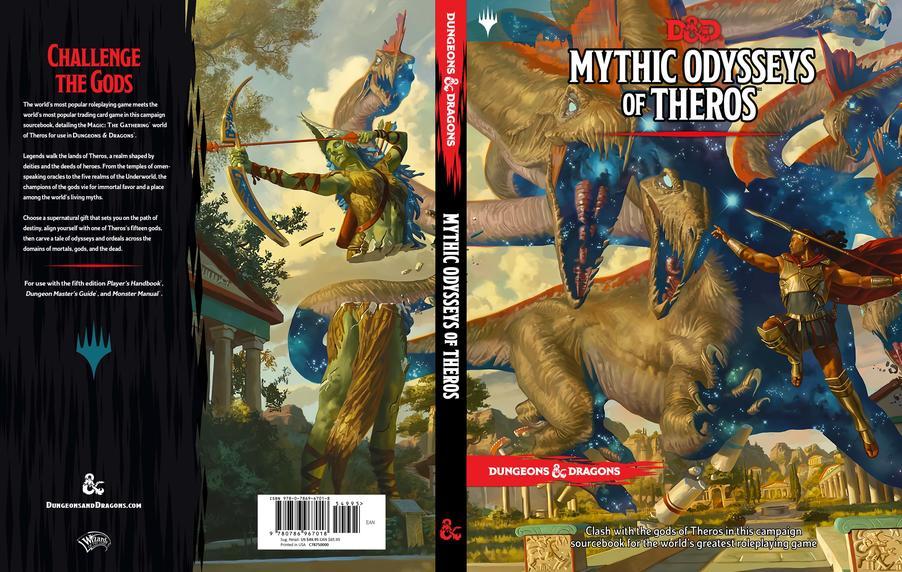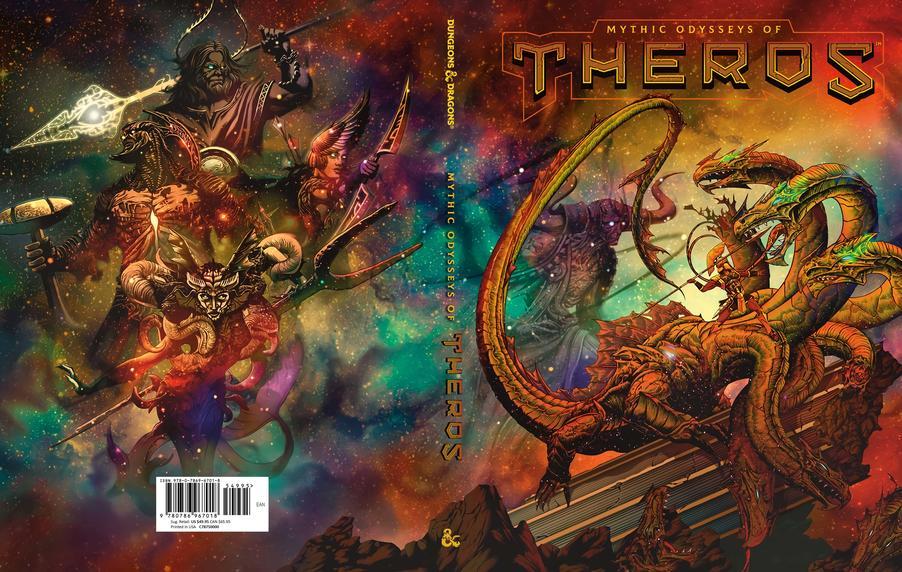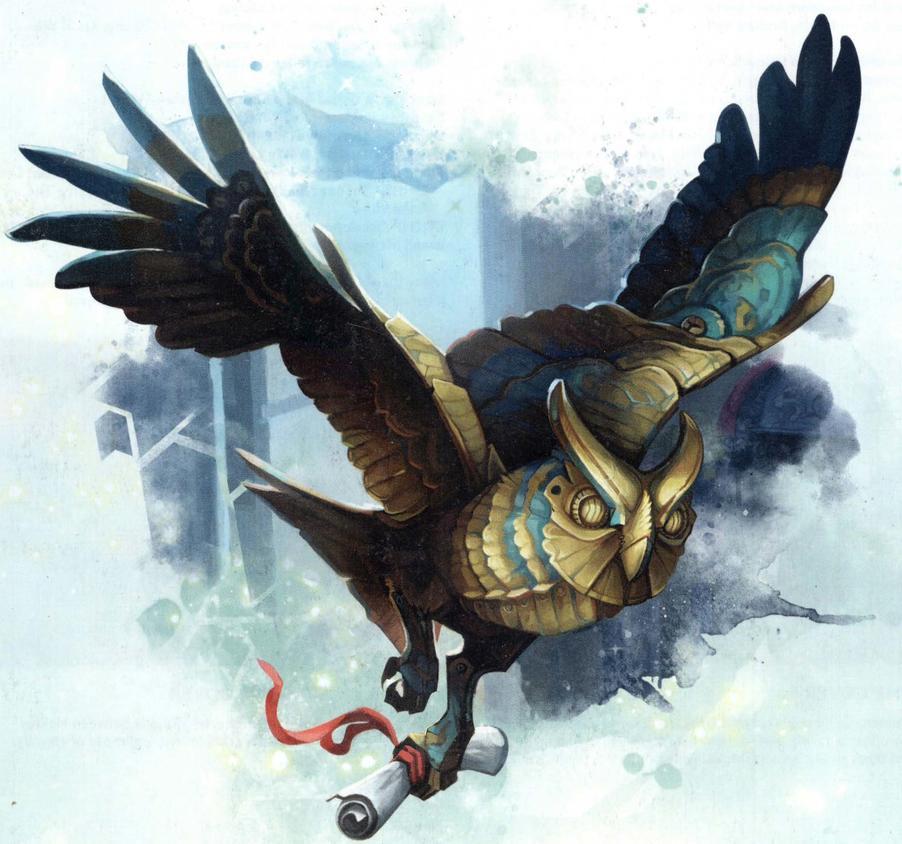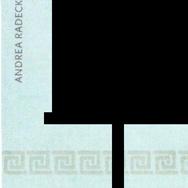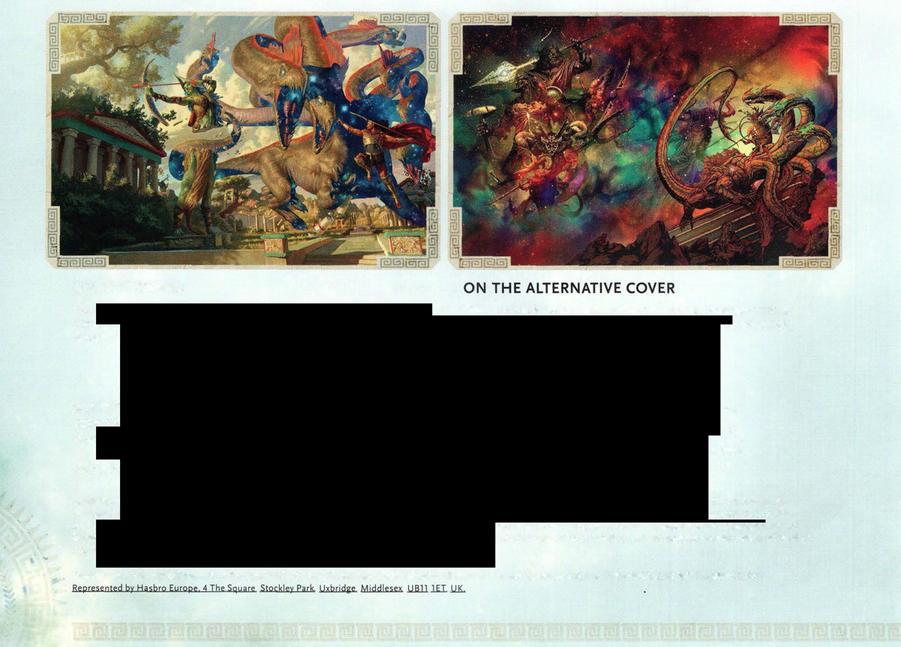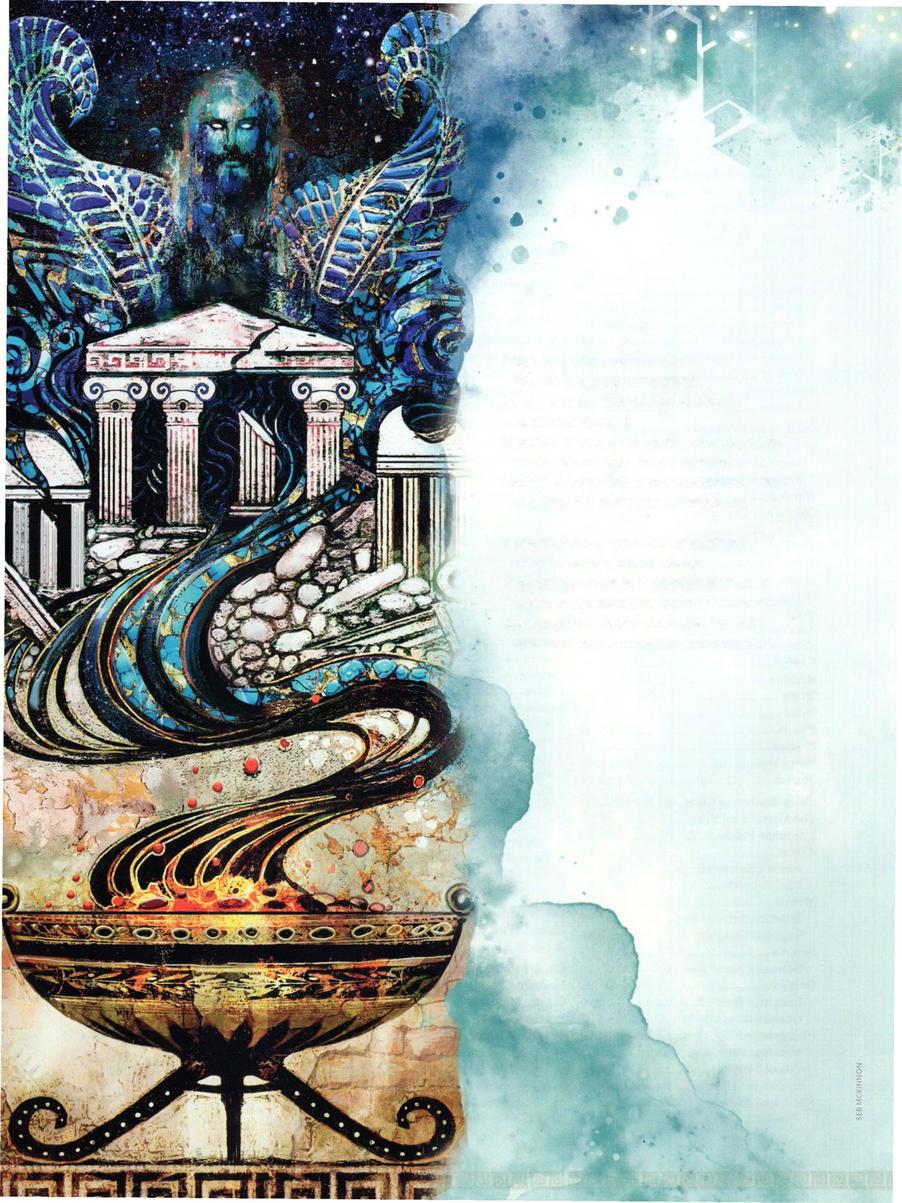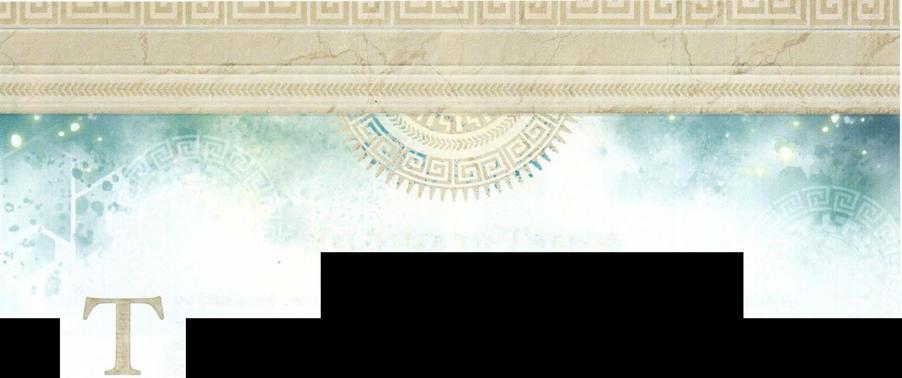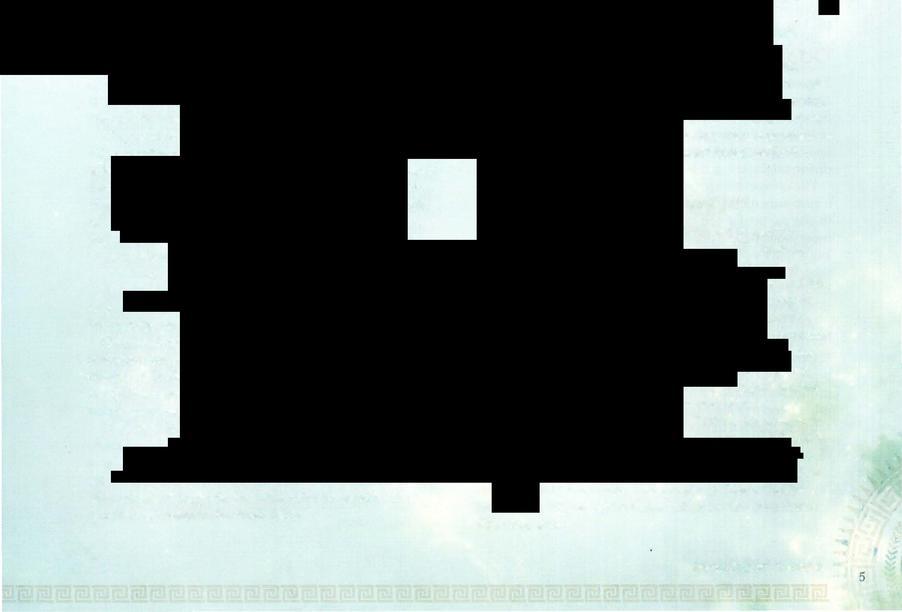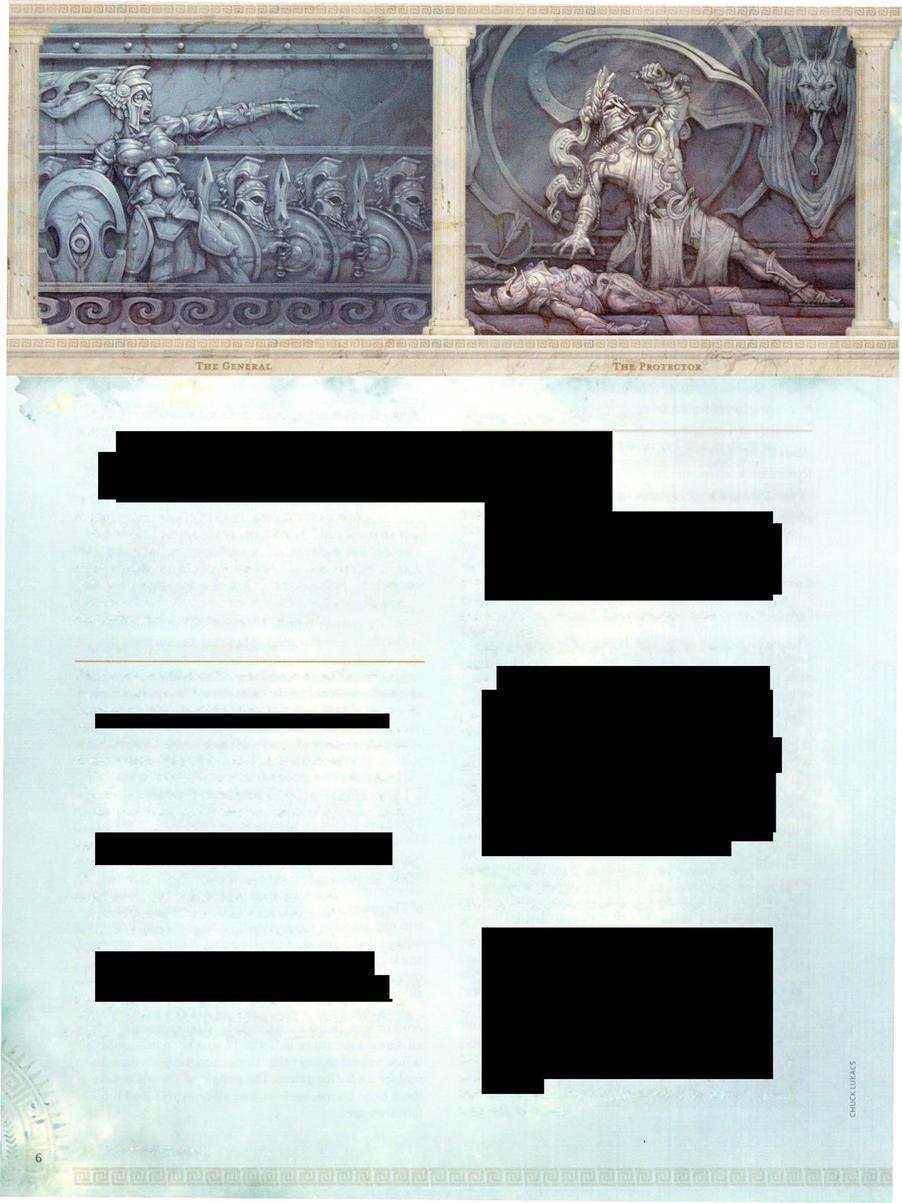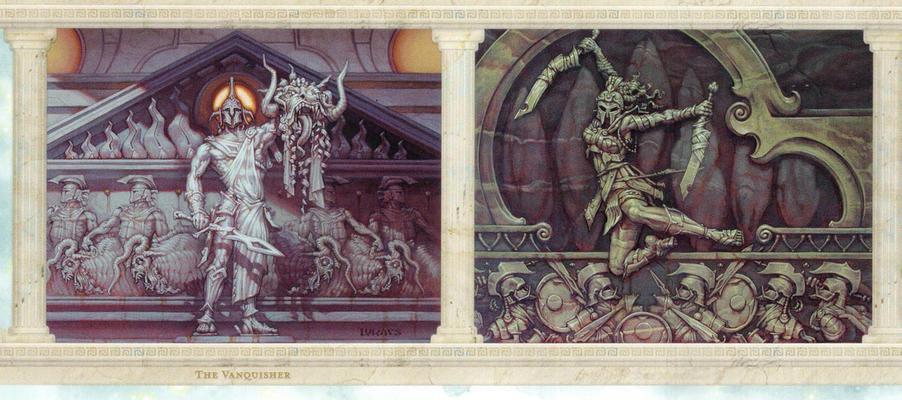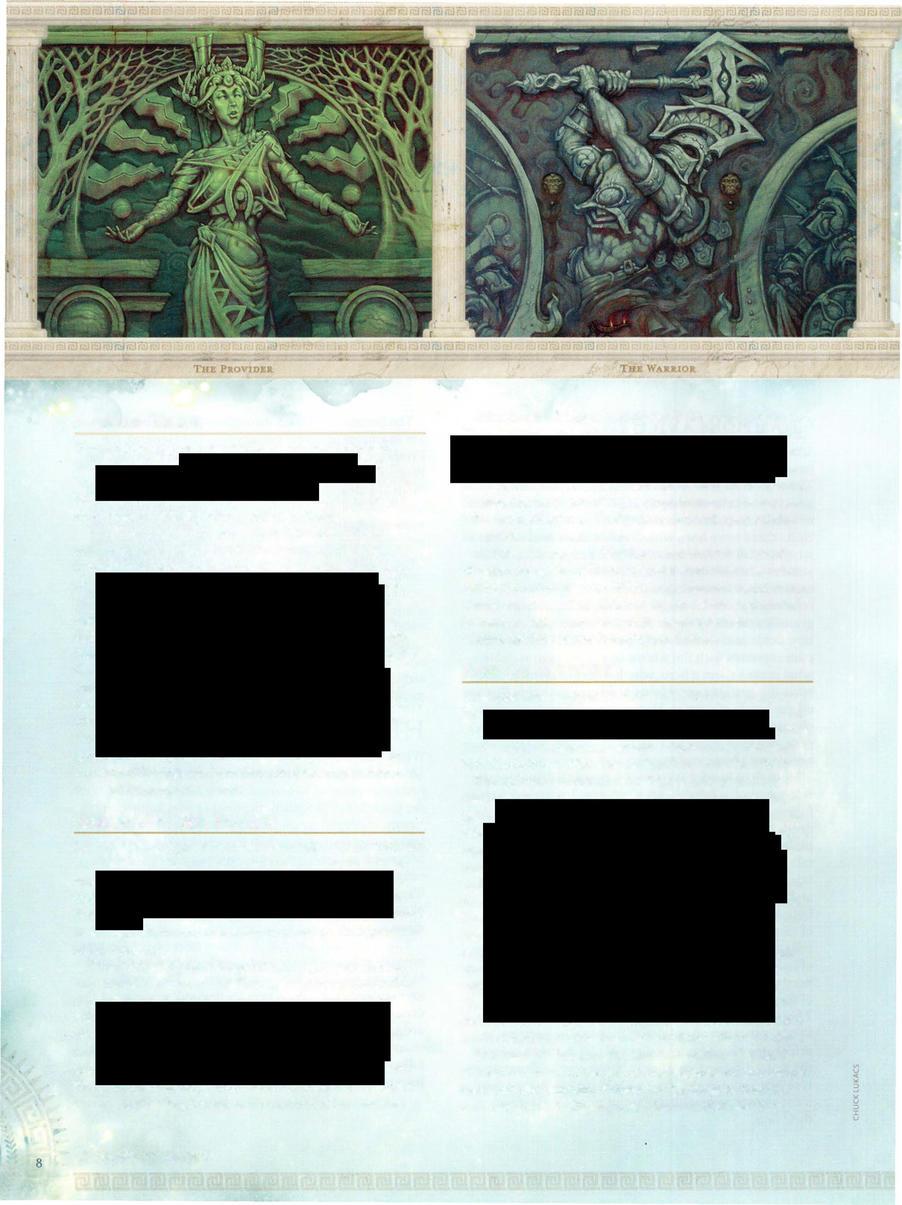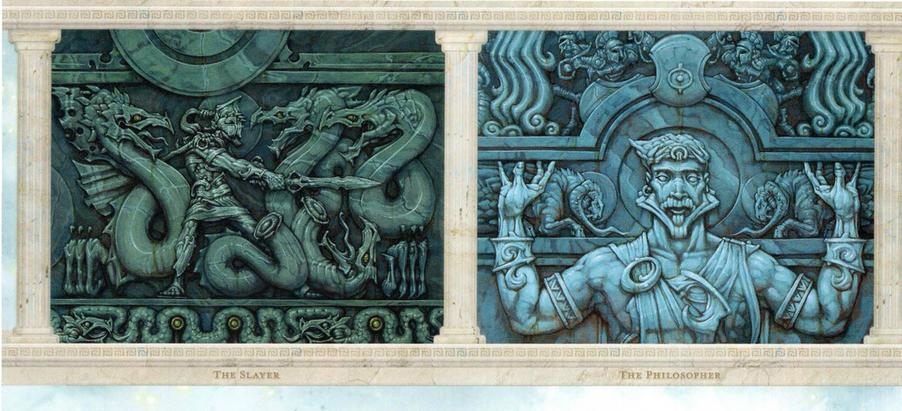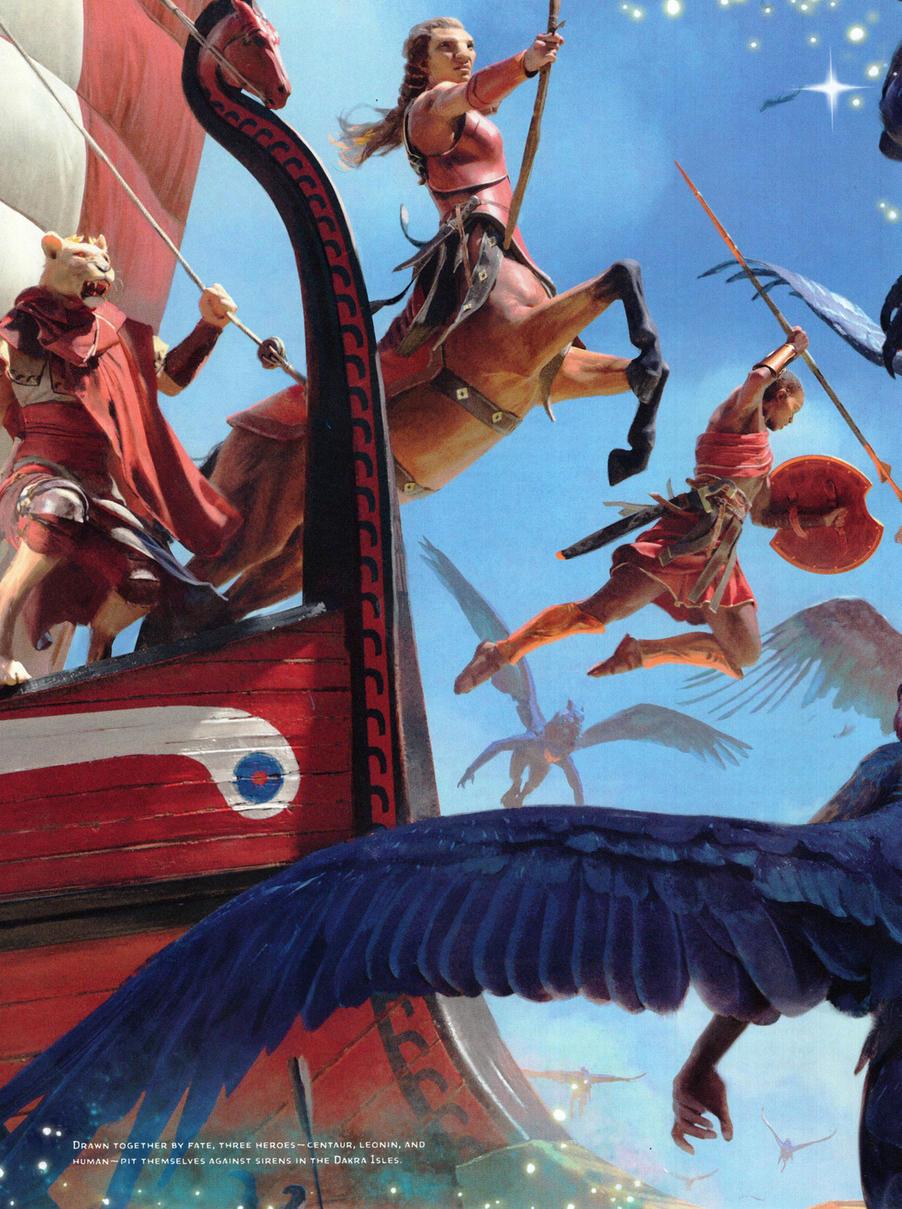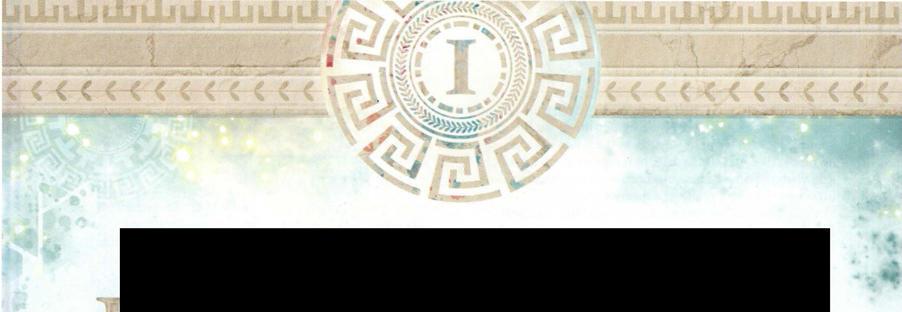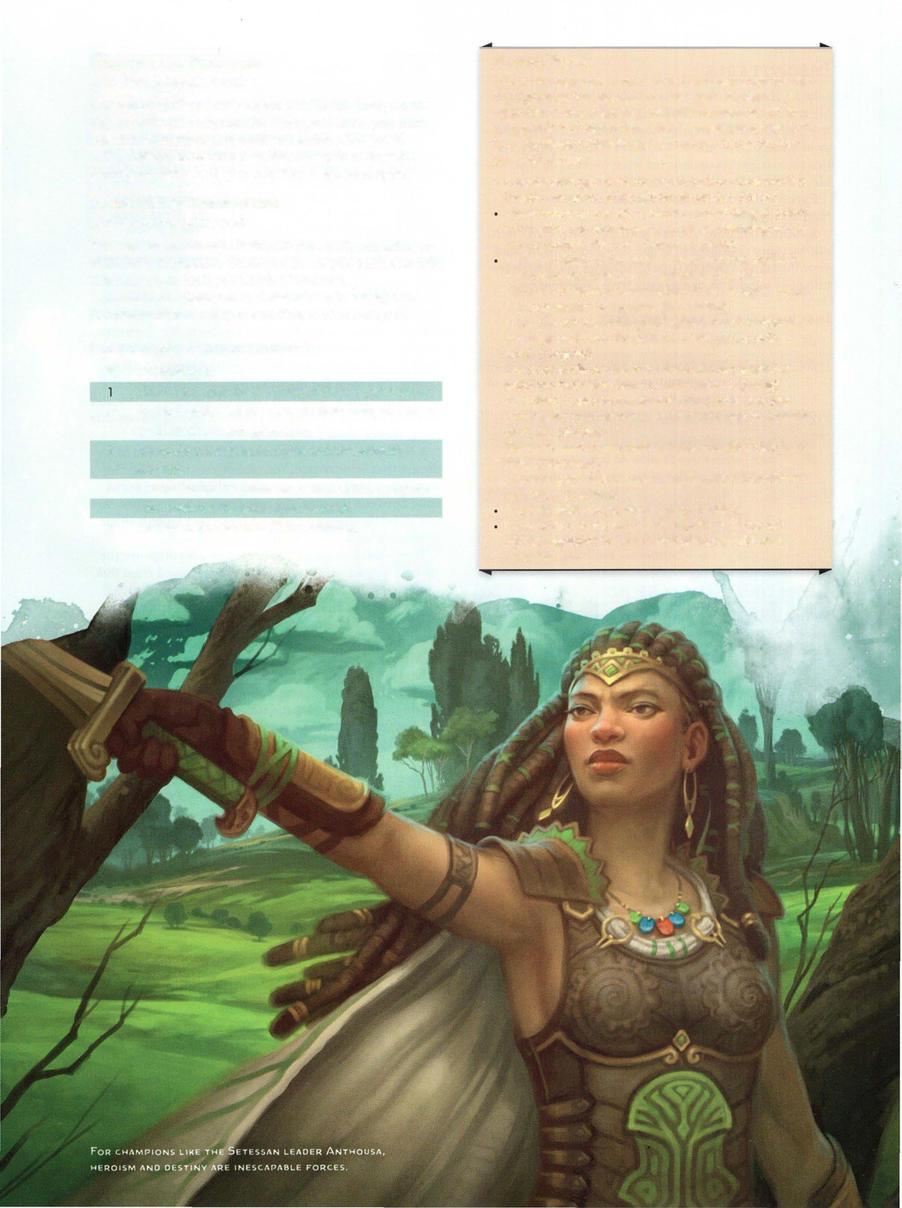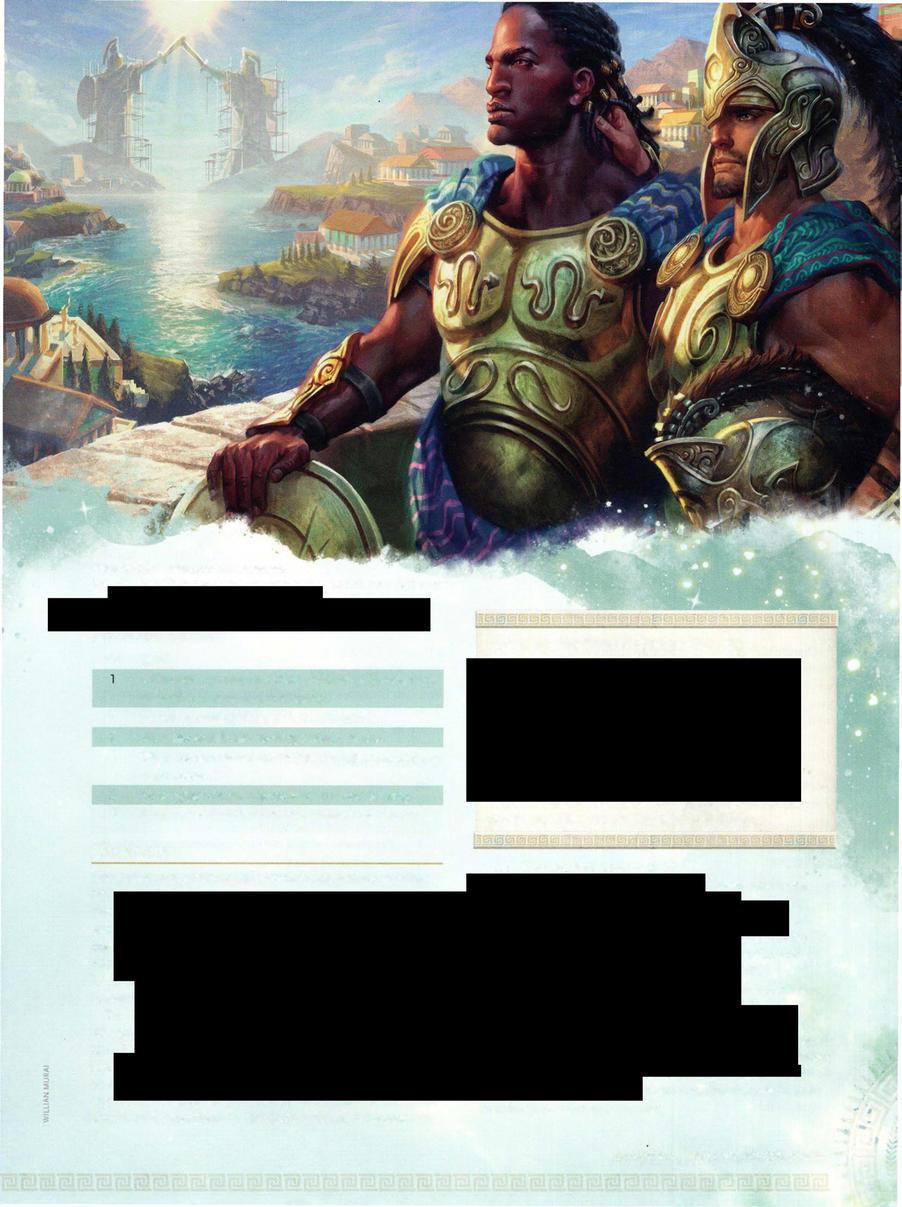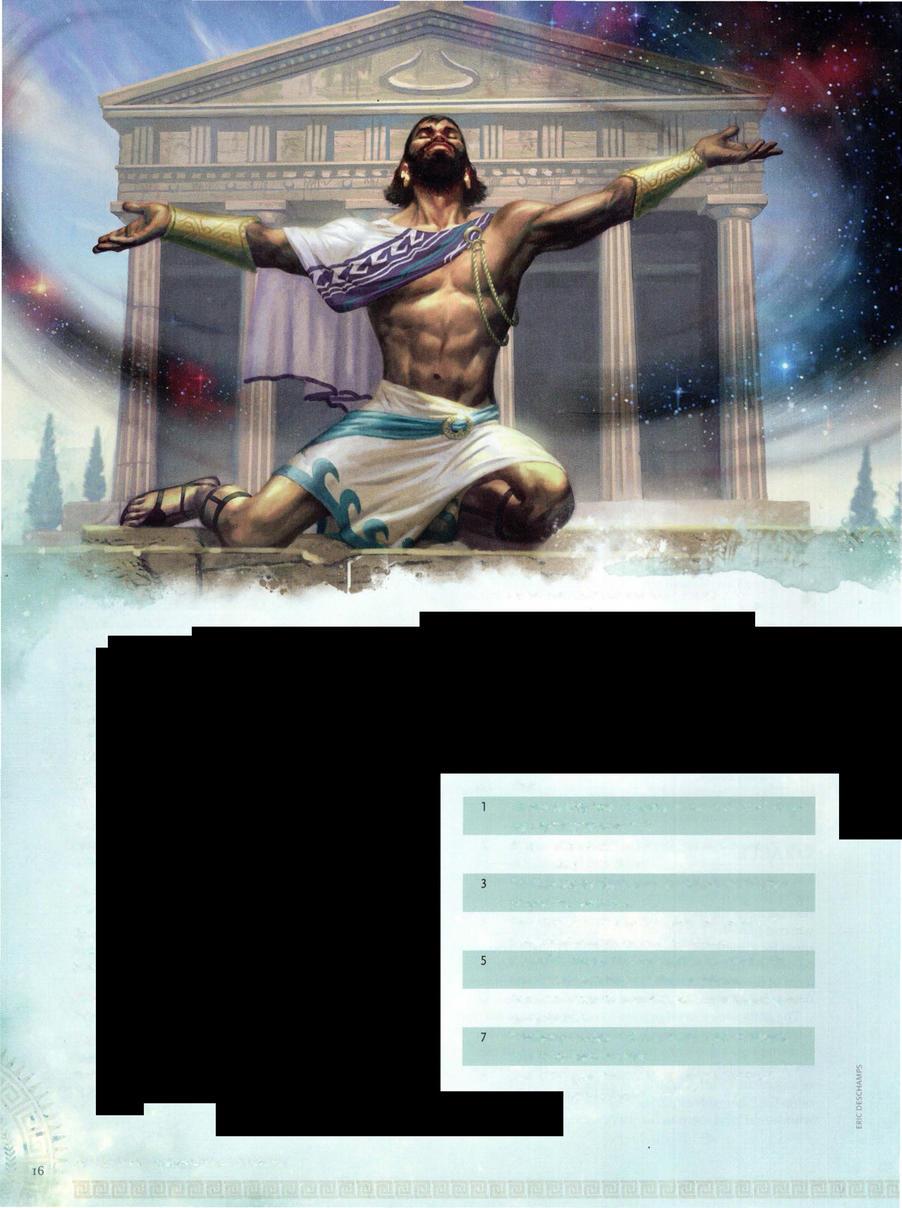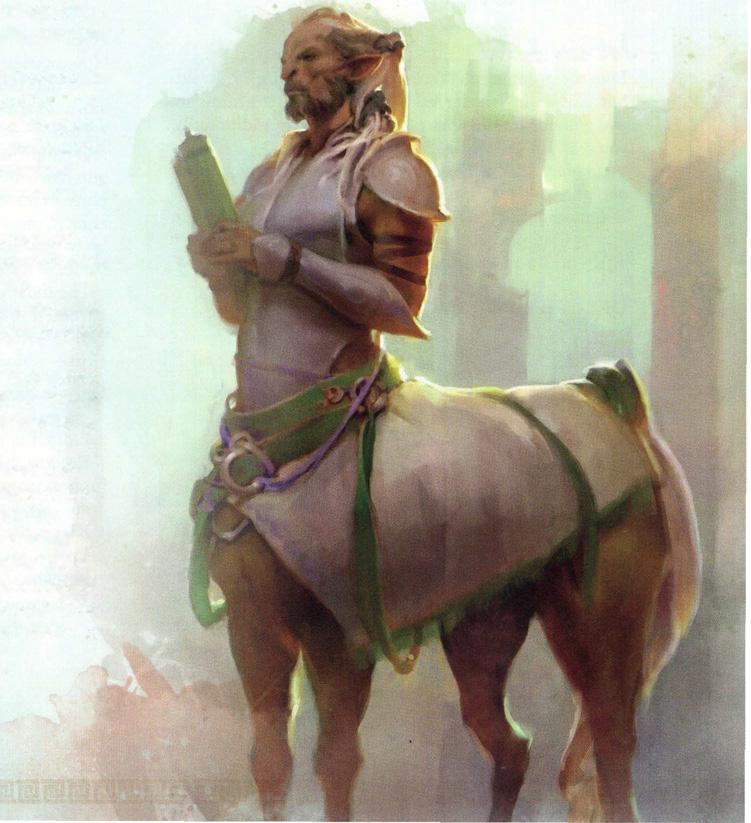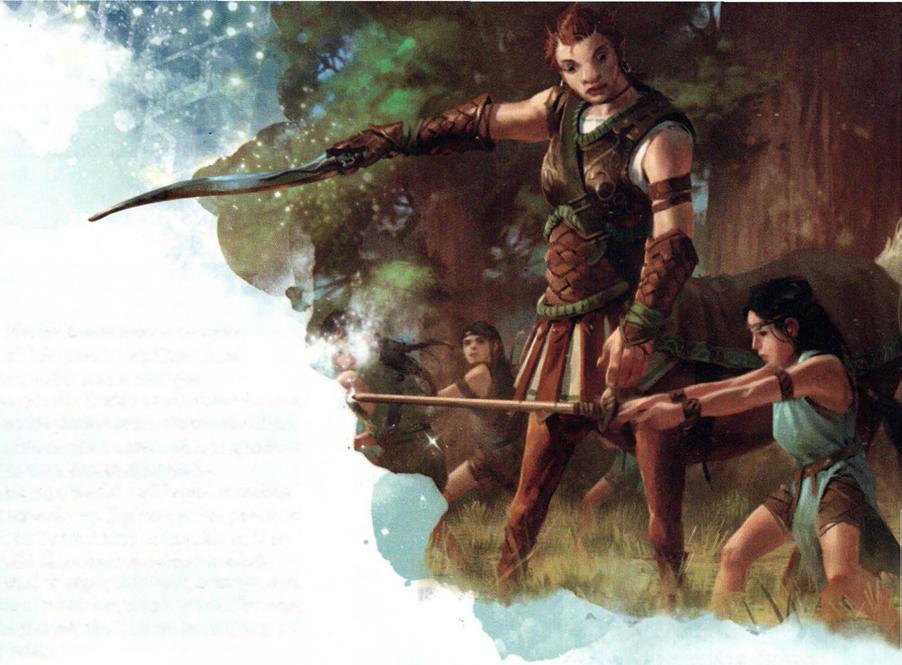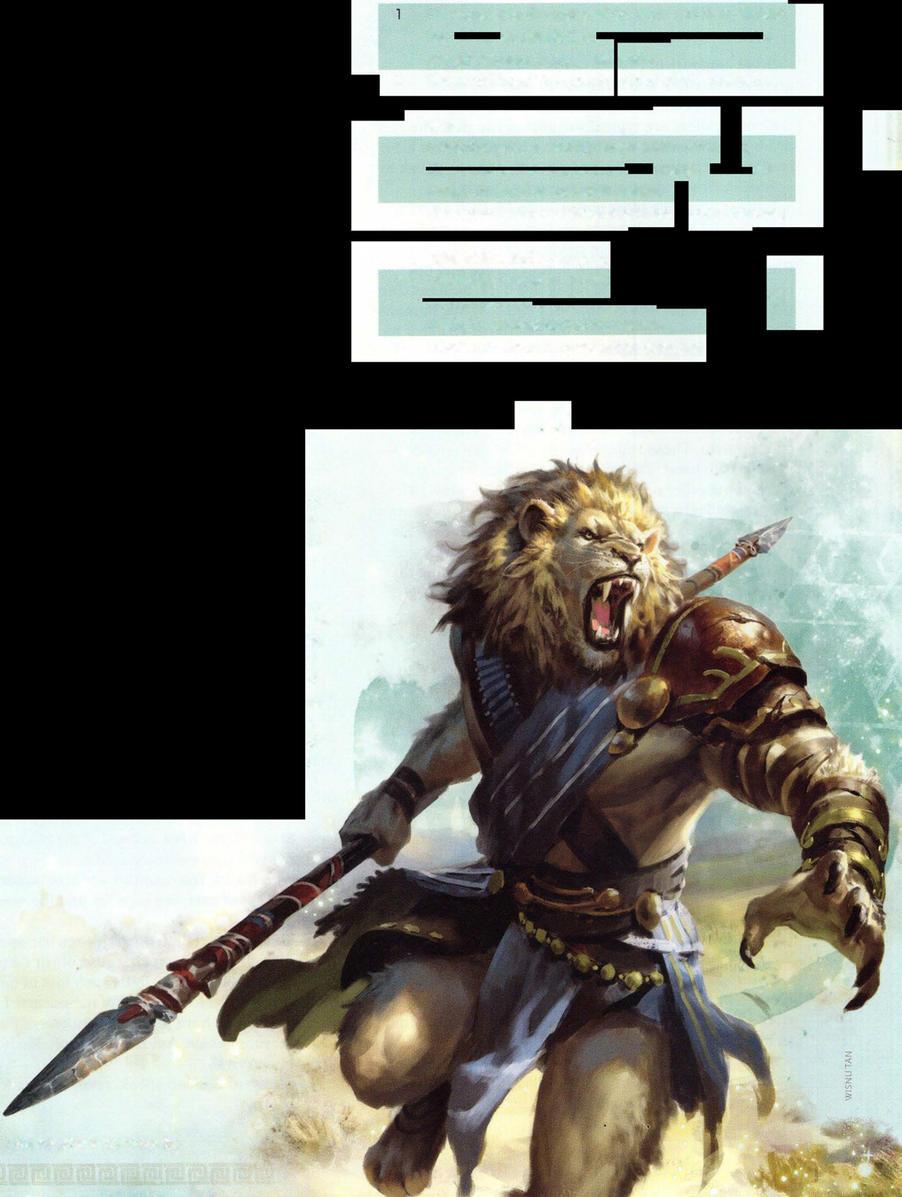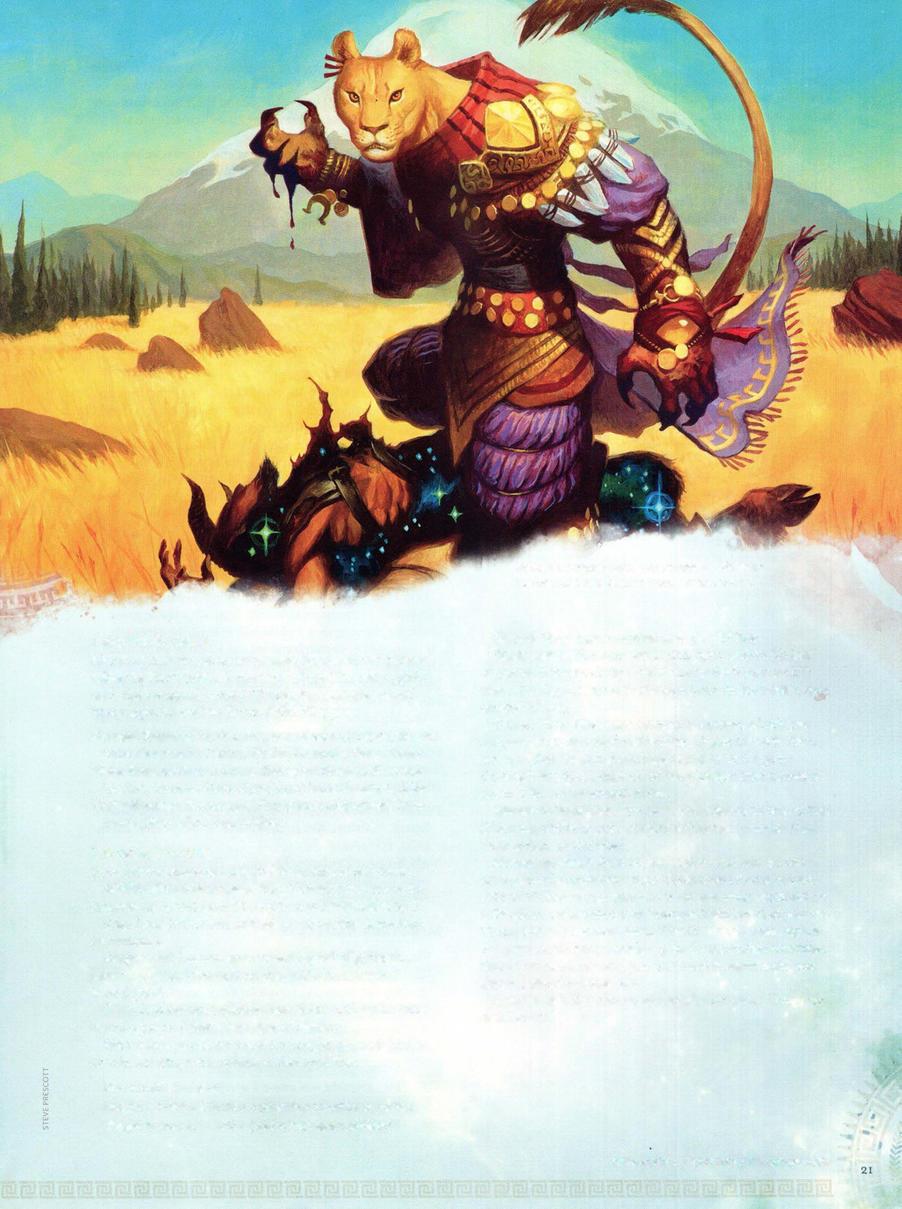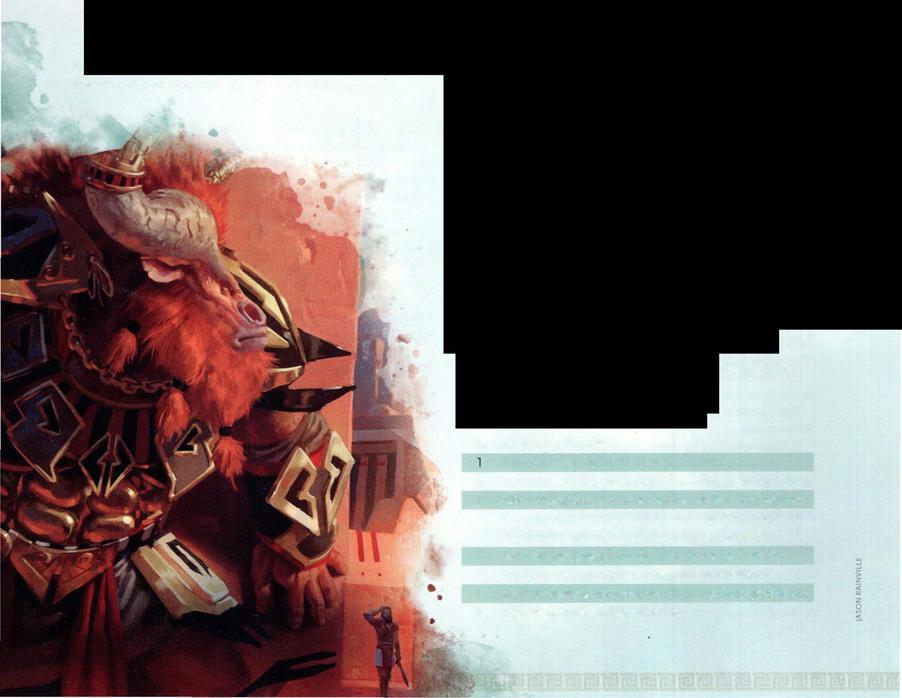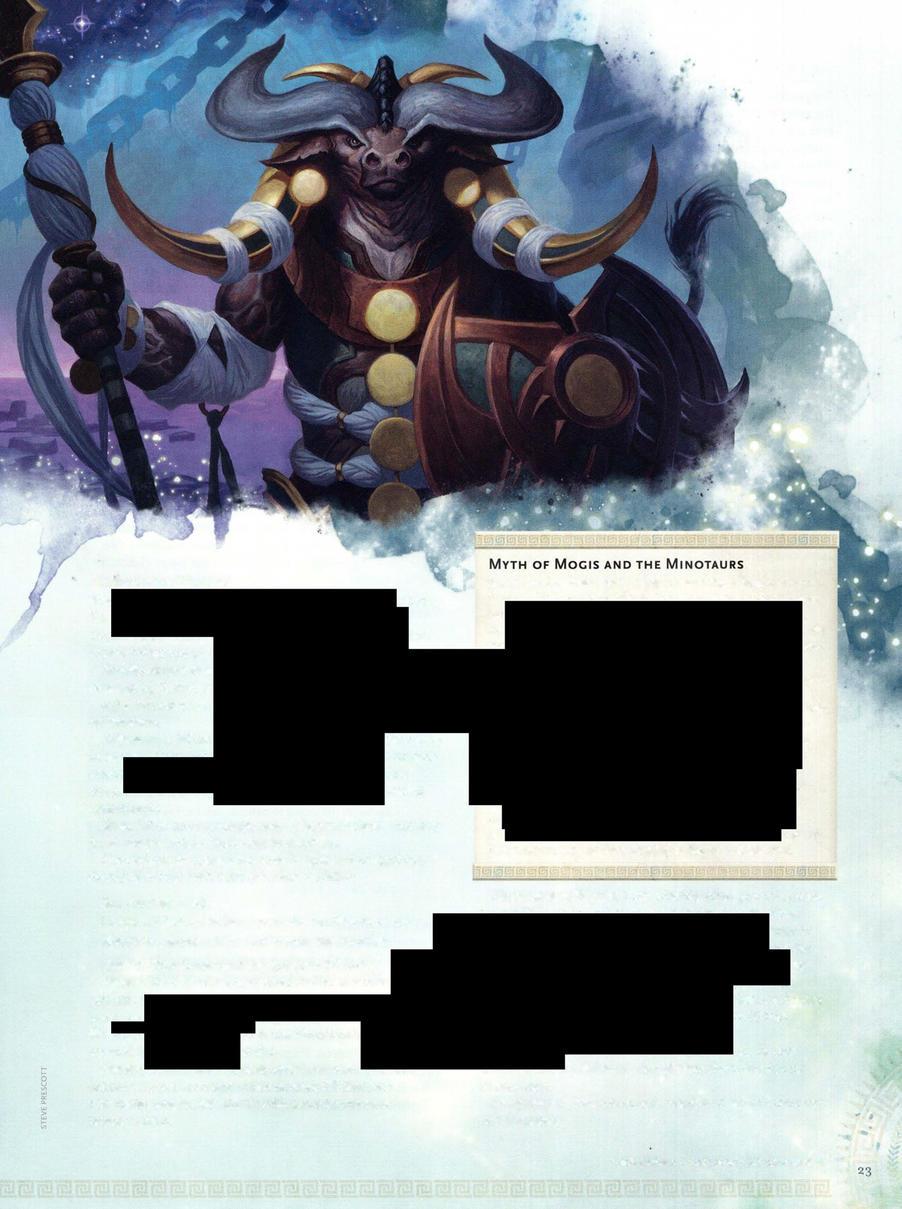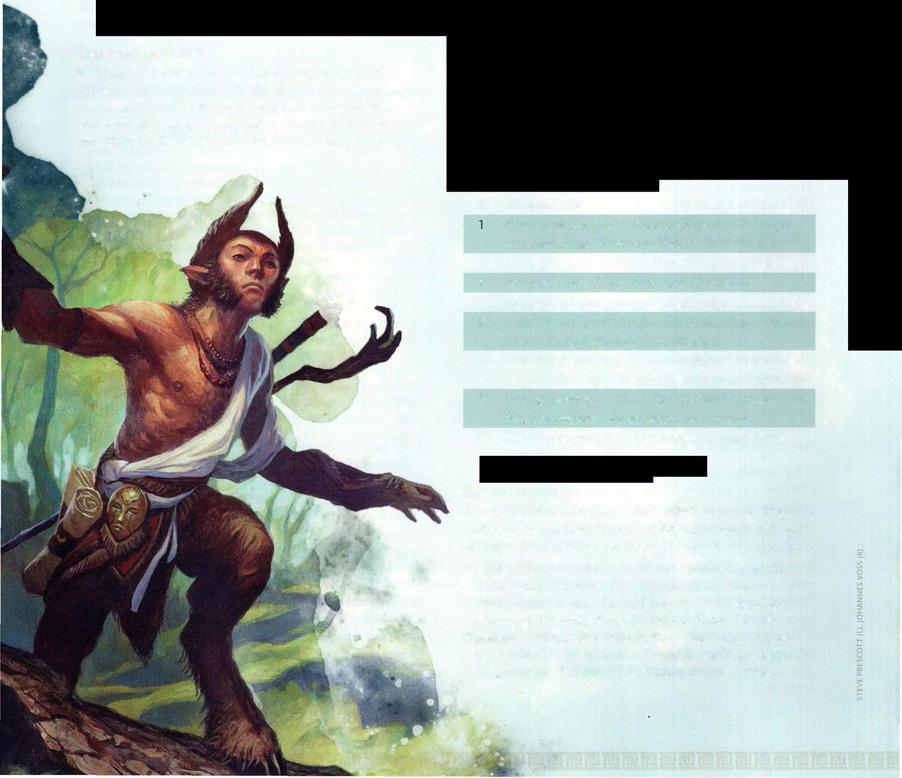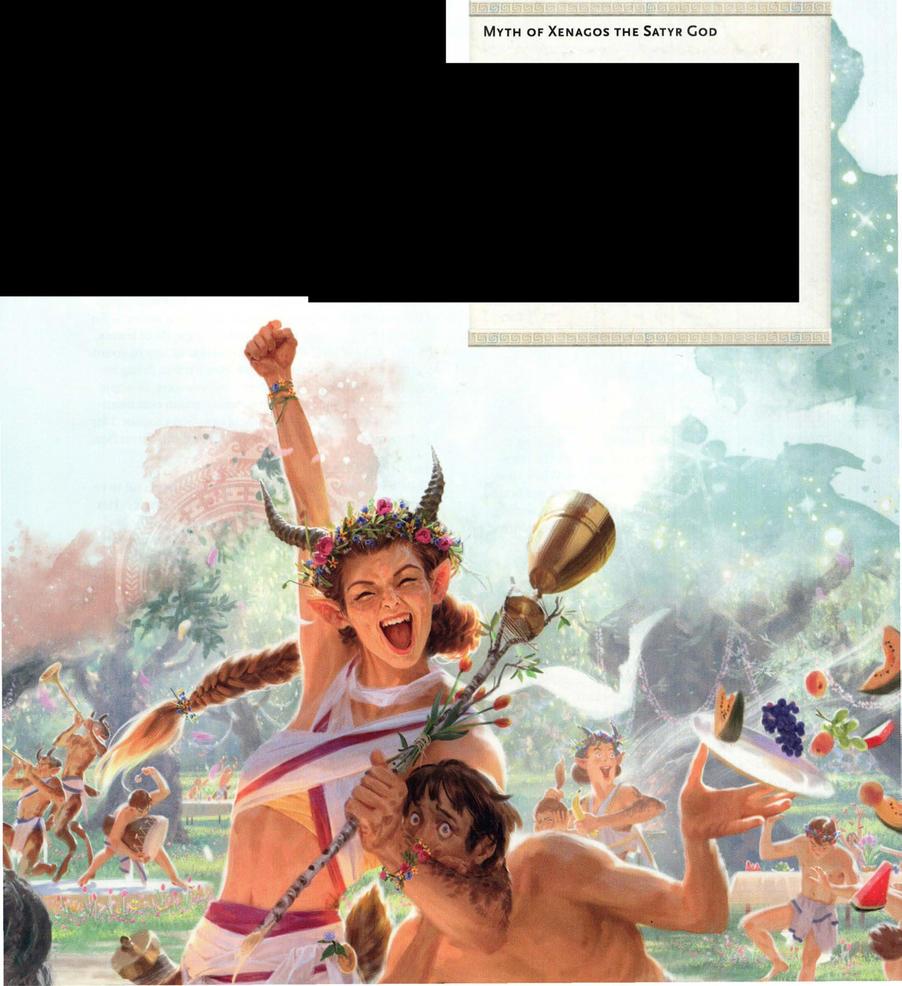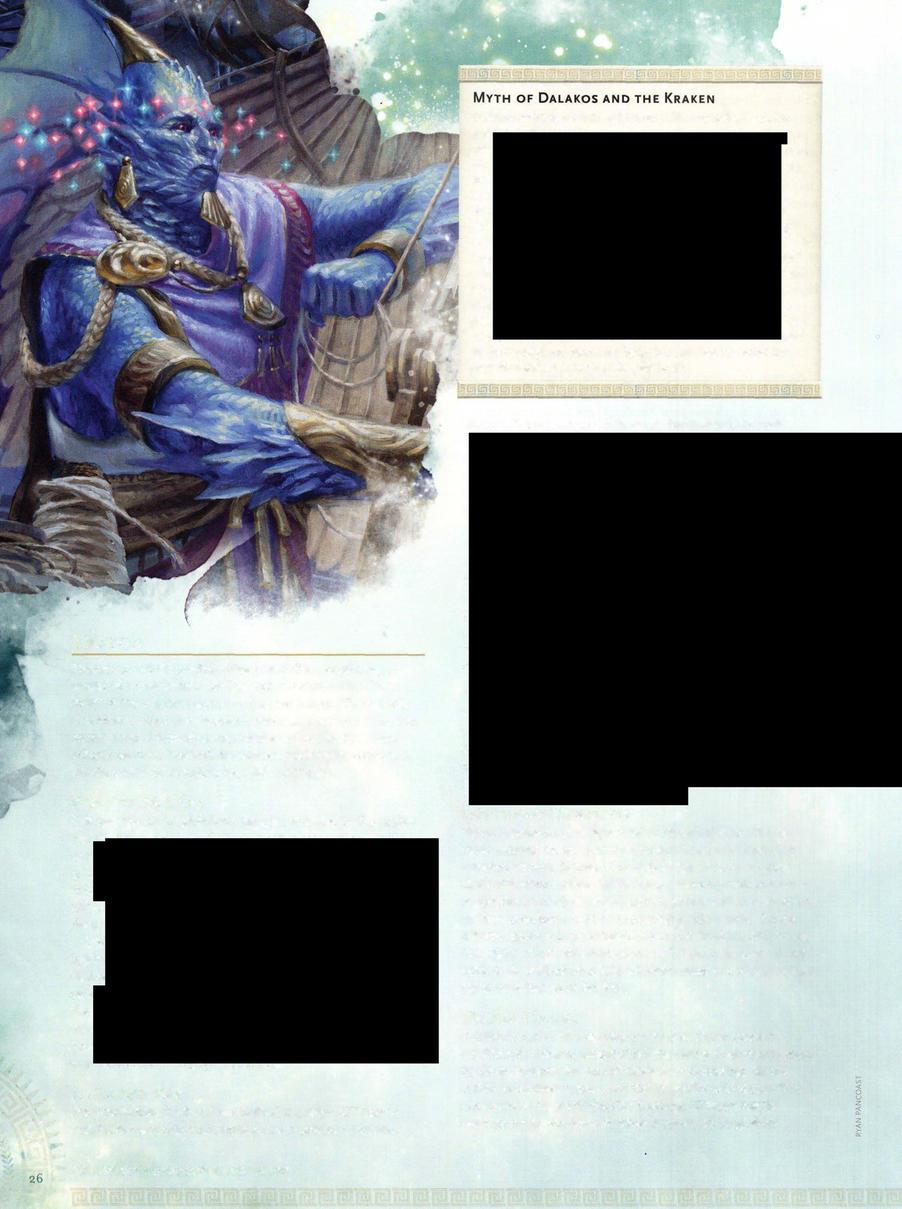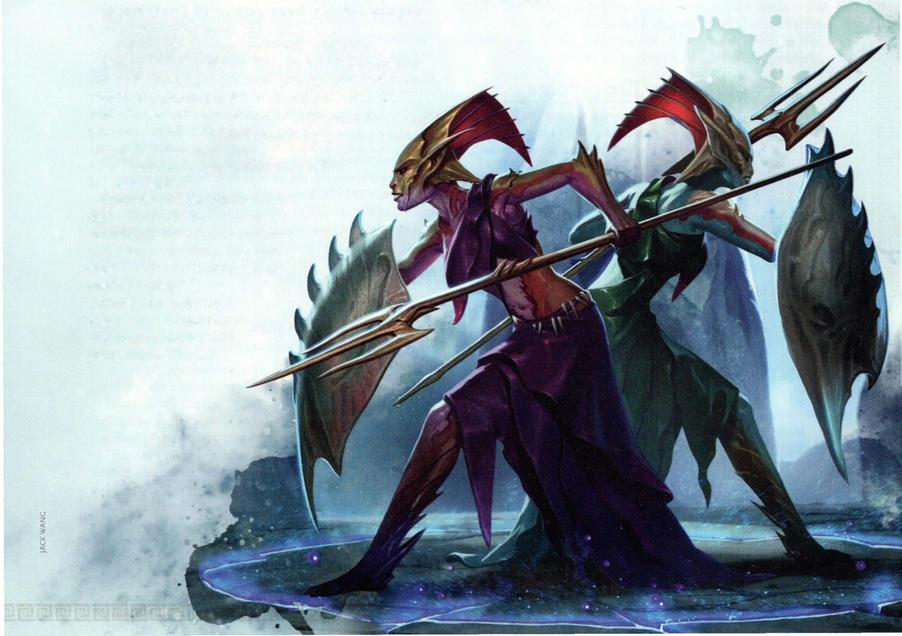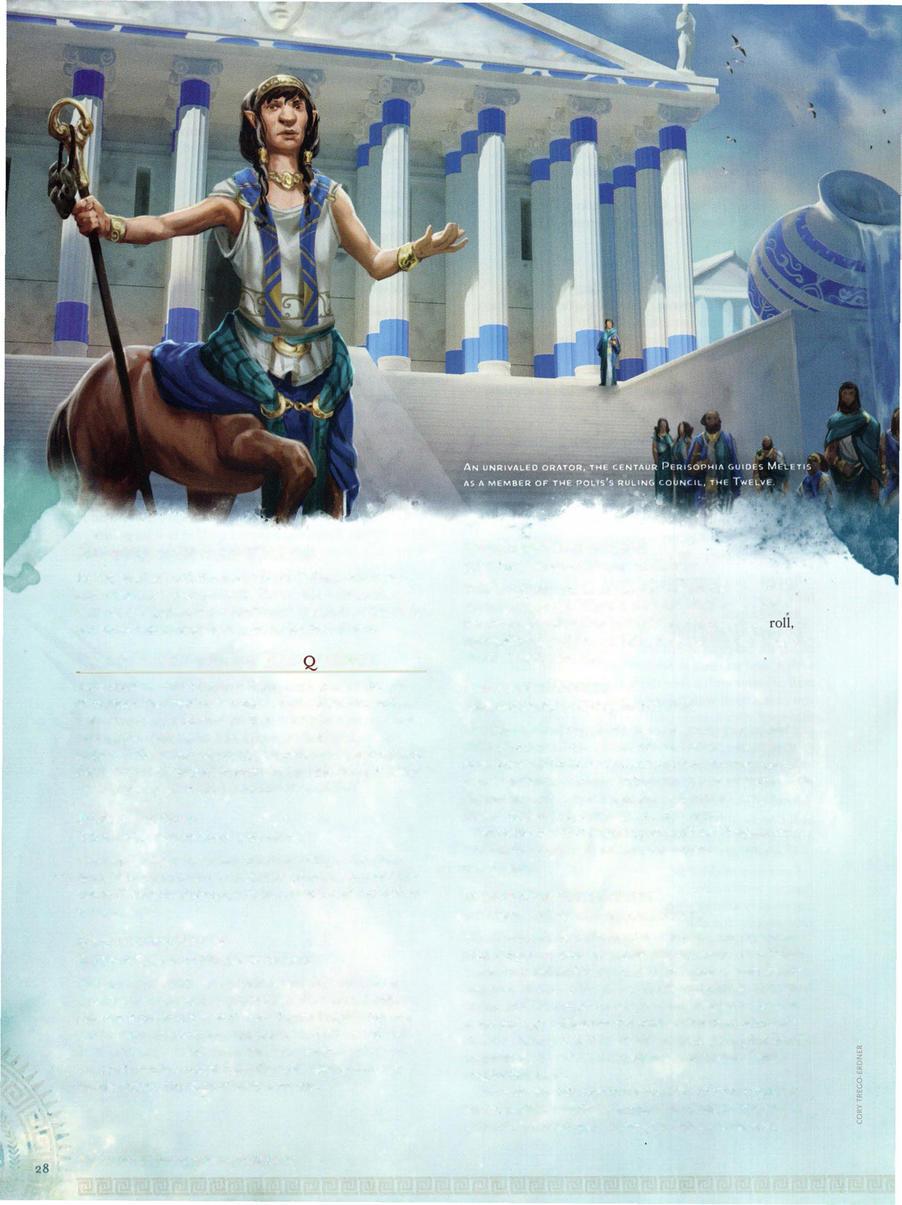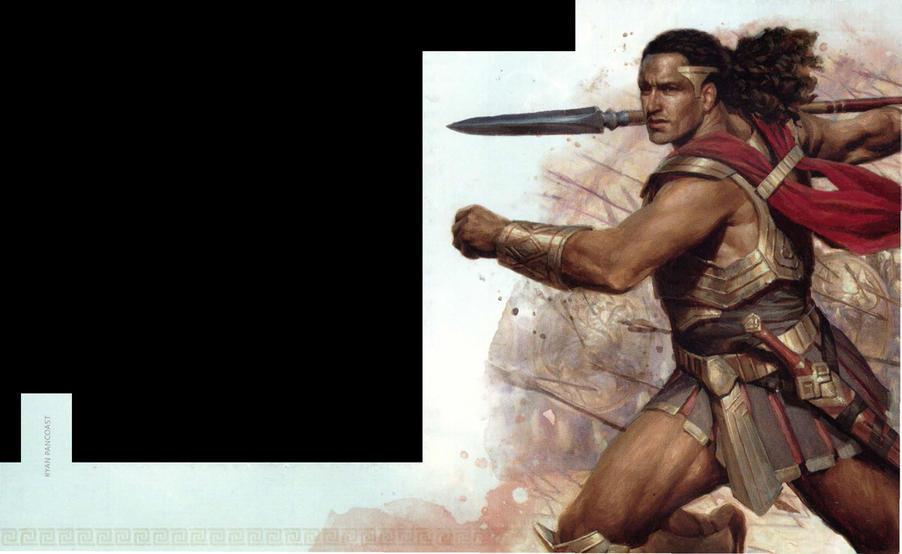WELCOME TO THEROS
HEY WERE ALONE ON THE GLASSY BLUE ocean. A waterfall stretched endlessly along the horizon line. The water at the edge of the world was like a placid pond, as if enjoying a last few seconds of existence before cascading over the edge in a raging torrent of white-capped water.
Directly in front of them was Kruphix's Tree. Two enormous trunks were separate at the base, but they arched toward each other and joined at the top in a single leafy crown. Stars glittered beyond the waterfall, but the background was milky violet with tinges of deep blue. The seawater that plummeted over the edge disappeared into the abyss of the stars.
They had reached the edge of the world.
-Jenna Helland, Godsend
The caprice of the gods. The destiny of heroes. Great journeys into monster-infested wilds, and mythic odysseys to the edge of the world and back. These elements of adventure fill the realms of Theros, a new setting for your DUNGEONS&DRAGONS campaign to explore.
The roots of Theros lie in the myths of ancient Greece, tales dominated by gods, heroes, and monsters. This world was created as a setting for the MAGIC:THEGATHERING trading card game, explored in card sets beginning in 2013. The lands of Theros serve as an example of how to take inspiration from real-world mythology and adapt it into a world built from the ground up for fantasy adventures.
This book is your guide to Theros, its gods, its peoples and their cities (or poleis), its threats, and its tales. It also guides you through creating characters destined to be legends and adventures born of this mythic setting.
Chapter 1 covers the heroes of Theros: the races, class options, and backgrounds you'll need to make a character It also introduces supernatural gifts available to starting characters-features that set Theros's adventurers apart as true heroes.
Chapter 2 introduces the gods of Theros, a squabbling pantheon of arrogant and powerful beings who view mortals as pawns in their strategic games. It also provides rules and guidelines for characters who serve as champions of the gods, including divine benefits they can gain as rewards for their piety.
Chapter 3 turns to the mortal world, the lands in which the epic adventures of Theros unfold. It covers the three city-states of humanity, the wild lands of leonin and minotaurs, the great forests and wide plains where satyrs revel and centaurs roam, and the seas where tritons dwell and titanic monsters lurk. It also offers glimpses into the divine realm of Nyx and the dismal realms of the Underworld.
Chapter 4 builds on the guidelines in the Dungeon Master's Guide, highlighting adventures set in Theros. Maintaining a focus on the gods, it presents omens that might launch heroes on the road to adventure, details hundreds of plot hooks, includes maps of potential adventure locations, and presents a short introductory adventure you can use to launch your campaign.
Chapter 5 details treasures of Theros, including the artifacts of the gods, the magical inventions of renowned artisans, and various other devices infused with the magic of the world.
Finally, chapter 6 presents numerous inhabitants of Theros. An exploration of familiar beasts from the Monster Manual and other sources-creatures with their roots in Greek mythology-details their place and unique characteristics in the lands of Theros. Several of Theros's most notorious creatures, foes as legendary as the world's most renowned heroes, are also presented as mythic monsters, terrors designed to test even the gods' mightiest champions.
DREAMS OF DIVINITY
Theros possesses a unique metaphysical property: things believed and dreamed here eventually become real. The collective unconscious of mortal people has the literal power of creation, though the process unfolds over the course of countless centuries. Thus, the gods of Theros and their servants were believed, dreamed, and narrated into existence, materializing and becoming fully real as a result of mortal belief in their power. As stories were told, sacrifices made, and devotion given over ages, the gods formed and gained lives just as real as the mortals who dreamed them into being.
Does that mean that the gods of Theros are less powerful or less divine than the gods of other worlds? Not at all. Once a dream or belief in Theros becomes reality, it isjust as real as any other thing, and the gods have been real for a very long time. The people of Theros believe them to be divine, ageless, and all-powerful, and therefore they are.
A single individual can't do anything to make the gods less real or change the nature of a god. Threatened with the wrath of Heliod, for example, a mortal can't simply "disbelieve" the god out of existence or turn his wrath to kindness. It's the collective unconscious of every sapient being on Theros that shapes reality, and changes to that reality occur on the scale of ages, not moments.
In practical terms, then, the gods of Theros are no less real, powerful, or important to Theros than the gods of other worlds are to those worlds. Notably, though, these gods have influence only over Theros and the two planes connected to it: Nyx, the starry realm of the gods, and the Underworld, eventual home of all die.
Gons AND DEVOTION
The central conflict in Theros is among gods, striving against each other over the devotion of mortals. Mortal devotion equates to divine power: when people fervently pray to a god, when they piously observe the god's rites and sacrifices, and when they devoutly trust in the god's divine might, the god becomes more powerful.
The competition for mortal devotion isn't necessarily a zero-sum game. The people of Theros don't believe in one particular god to the exclusion of others, and the most pious people pray to all the gods with equal fervor But a deity's goal is to increase the number of people who, when faced with peril, will call on that god for help. It's that trust, that reliance, that faith that gives the gods their power, not merely ideas and concepts.
Mortal beings-heroes and monsters alike-often become unwitting pawns in the contests of the gods. Having a powerful champion is an indication of a god's power-and can potentially increase the god's own power. A champion who acts as an agent of a god among other people helps increase those people's devotion to the god. And if a hero should happen to strike down the agents of a rival god along the way, all the better.
FATE AND DESTINY
Two closely related concepts loom large in the way mortals think about their place in the world: fate and destiny.
The idea of fate is that the course of each mortal's life is predetermined, spun out in a tapestry woven by a trio of semidivine women, the Fates. Gods aren't bound by the strands of fate, their lives and legends constantly changing and endlessly uncertain. In the case of most mortals, it's thought they plod along their predetermined path from beginning to end, carrying out the tasks appointed for them until they complete their journey to the Underworld.
This fairly bleak view of existence is undermined by the heroic ideal exemplified in myths, legends, and the lived experience of Theros's people. Heroes, by definition, are people who defy the predetermined course of fate. They take their fate into their own hands and chart their own courses, striding boldly into the unknown, striking down supposedly invincible foes, and resisting the will of gods. Their proud defiance of fate is rewarded when they at last complete their mortal journeys; worthy heroes spend their afterlives in Ilysia, the fairest realm of the Underworld, where they finally rest from the struggle of their lives. In many cases, their works also live on, both in the stories of future generations and repeating in the night sky among the stars of Nyx.
Destiny is different. The strands of destiny are spun from the hair of the ancient god Klothys, but they don't chart a predetermined future. Destiny establishes the order of things, the hierarchy of being, the relationship between gods and mortals, the instincts and impulses that govern mortal behavior, and other aspects of the way things are. Gods and mortals alike are constrained by the threads of destiny. Mortals can do little to alter them, but more than once the arrogance and presumption of the gods have caused the strands of destiny to become tangled. The god Klothys enforces the bounds of destiny. She isn't only the spinner of destiny's strands but also an avenging fury, punishing the foolhardy gods who tangle them.
CHAMPIONS AND HEROES
The champions of the gods number among some of the most influential and inspirational figures in Theros. These mortals have personal relationships with the gods, potentially serving as divine agents in the world or being compelled to action by immortal schemes. Still others were born with divine gazes set upon them, whether due to their remarkable abilities or the circumstances of their birth. Through their lives, champions experience the blessings and curses of their divine relationships. Some might brandish incredible powers granted to them by the gods. Others, however, discover how fickle and vindictive the gods can be. How a champion contends with the whims of a deific patron defines what makes them a hero, whether they seek incredible ways to court immortal favor or forge a path that throws off the bonds of destiny. Regardless of the course they choose, the deeds of champions influence belief in the gods, but even more so, they fill the hearts of Theros's people with hope and wonder.
The heroes illustrated throughout this introduction are examples of heroic archetypes. The General, the Protector, the Vanquisher, the Hunter, the Provider, the Warrior, the Slayer, the Philosopher, and others like them are idealized figures who appear in narrative and theatrical drama-sometimes with personal names attached, but often without. Tales describe the Slayer destroying a hydra ... and a mighty cyclops, and a dragon, and a Nyxborn giant, and a lamia, and any number of other creatures. Did one Slayer do all that? No, the archetype has become the repository for legends about many different heroes, all of whom are notable primarily for slaying something.
The heroes of a Theros campaign might aspire to emulate one of the great heroic archetypes, or they might strive to forge an entirely new mythic identity, to be remembered by name in tales of glory forever.
HISTORY AND MYTH

More than just for their deeds, heroes fill an important role among the inhabitants of Theros. Legendary heroes form a vast collection of well-known archetypes whose deeds create cultural touchstones and shape modern philosophies. They also embody the potential of mortals to be more than mere drops in the raging river of fate. Tales of heroes teach that greatness is achievable and that there is more to the world than what any one individual knows. The people of Theros see the truth of this in the powers of the gods and in the immortal constellations that fill the night sky. Even as the names of individual heroes might eventually fade away, their deeds live on as heroic archetypes-such as in the case of the nameless champion in the renowned epic, The Theriad. These archetypes teach and inspire, whether they're represented in tales of journeys or creation, in sculptures rising above polis roofs, or in the temples of the gods. Throughout Theros, those who seek greatness typically begin by deciding what heroic archetype they most closely align with and letting that ideal influence their fate.
When storytellers relate the history of Theros, they always speak in the most general terms. An event of just ten years past happened "many years ago," and the founding of Meletis in the distant past happened "many, many years ago." In Theros, history transforms into myth more quickly than it does in other worlds, becoming generalized, vague, and moralistic. And because the gods are so deeply involved in mortal affairs, it's often impossible to distinguish between the myths of divine activities and the scraps of historical fact in these records.
The origin and generations of the gods-from the primordial titans to the modern pantheon now worshiped in Theros-are described in chapter 2. The world's myths also fill this book, stories that still resonate in the dreams and ambitions of Theros's people. These myths are noted in distinct sections, with the first appearing in chapter 1. Yet the largely agreed upon history of mortal folk on Theros occurred more recently and is thought to have unfolded as follows.
TH& HU1>Tl!:R
AGE OF TRAX
Human history vaguely recalls an era just before the birth of modern human civilization, called the Age of Trax. This semi-mythical era, nestled several centuries back in the fog of historical memory, is marked by the rule of supernatural beings called archons.
The archons of Trax are said to have come from unknown lands to the north and established a heavyhanded rule over the humanoids of Theros. Many peoples remember this as a time of oppressive servitude, when they were forced into the armies of the tyrant Agnomakhos. The archons dubiously suggested that their rule actually protected the weaker species-centaurs, humans, leonin, minotaurs, and satyrs-from the dangers of far more powerful beings. Giants, demons, and medusas are said to have ruled kingdoms of their own in those days, and tales tell of Agnomakhos leading his leonin soldiers to repel an invading army of giants. Dragons, krakens, and hydras are also said to have grown to even greater size in those days than they do now, annihilating whole nations and carving untold catastrophes across the land.
BIRTH OF THE POLEIS
The end of the Age of Trax corresponds roughly with the rise of the fourth and latest generation of gods, whose interests lie in the application of more abstract principles to the realities of mortal life. Three of these godsEphara, Iroas, and Karametra-played significant roles in the establishment of human civilization, in opposition to the archons.
The goddess Ephara inspired and equipped two human heroes, Kynaios and Tiro, to overthrow the archon Agnomakhos. Divergent tales describe their history following the defeat of the tyrant. Some claim that they warred with each other for control over the region and that only their eventual death paved the way for the peace that allowed the new polis of Meletis to flourish. The truth is that they ruled Meletis peacefully together, established its legal code, and defended it for decades.
After the fall of Agnomakhos and the other archons of Trax, humans and minotaurs waged a bloody war in the highlands. The poleis of Akros and Skophos were born from that bloodshed, inspired by the martial doctrines of Iroas and Mogis rather than the legal code of Ephara. Eventually the years of war settled into an uneasy peace with the badlands of Phoberos as a barrier separating the poleis from each other.
Meletis, Akros, and Skophos perpetuated the stark division between civilization and nature that was inherent in the archons' rule. While most humans (and minotaurs) embraced that division, the god Karametra tried to teach people a new way of living in harmony with nature, leading to the founding of Setessa.
AGE OF HEROES
The uncounted centuries since the fall of the archons have been marked by the exploits of great heroes, many of which are recorded in works of epic prose and poetry. Three major narratives remain widely retold and studied: The Akroan War, The Callapheia and The Theriad.
The epic tale of the Akroan War is only nominally a history of the long siege of Akros, precipitated by the queen of Olantin abandoning her husband and going to live with the Akroan king. With the war as a backdrop, a nameless poet spins tales of gods and heroes, victories and tragedies. The death of the triton queen Korinna, and the resulting birth of the Dakra Isles from Thassa's falling tears, is a tale told incidentally, by way of comparison to the grief of the Olantian king. The tale of Phenax escaping from the Underworld is told to explain the origin of a phalanx of the Returned that comes to fight alongside the Olantian forces. And when the sphinx oracle Medomai appears and foretells the fall of Olantin, the poet tells of Medomai's earlier prophecy of the destruction of Alephne-a tragedy that could have been averted had anyone believed the sphinx's dire warning.
The saga of Callaphe the Mariner, told in The Callapheiea, is a more coherent narrative focused on a single hero and her exploits. Known as the greatest mariner who ever lived, Callaphe was a human trickster from
WELCOMETOTHEROS
Meletis who sailed a ship called The Monsoon. She was the first mortal to decipher the secret patterns of the winds (provoking Thassa's ire), and she sailed over the edge of the world and into Nyx to claim her place among the stars. The tales of her adventures are a mythic tour of the Dakra Isles and the coastlands of Theros, describing a panoply of creatures, nations, and marvelous phenomena-some of which still exist as described in its verses, though others are lost to history or myth.
The Theriad is a different sort of epic, closely associated with the worship of Heliod. At a glance, it appears to be about a champion of Heliod who is never named but simply called "the Champion." A closer read, though, reveals that the tales take place over the span of centuries and the identity of the Champion changes from tale to tale. In fact, The Theriad is a compilation of tales describing the exploits of many different champions of the sun god. It is widely believed that some tales are actually prophecies of champions yet to come.
RECENT MEMORY
LANGUAGES
Theros is not the most cosmopolitan of worlds, and a relatively small number of languages are used in its lands and sea. The citizens of the three human poleis (Meletis, Akros, and Setessa) speak their own dialects of the Common language, mutually intelligible but just different enough to identify the speaker's native land. Leonin and minotaurs have their own languages, and tritons speak the Aquan dialect of Primordial. Centaurs and satyrs speak distinct dialects of Sylvan, and different bands of centaurs even pronounce the same words differently. Giants and cyclopes share one language. Dragons and sphinxes have distinct languages rarely spoken among mortals of Theros, and the gods themselves speak in a unique language that few beyond mortal oracles can understand.
STANDARD LANGUAGES
Language Typical Speakers Script
The Age of Heroes has not yet come to an end, and more epics will surely be sung and written as more heroes take their destinies into their own hands and chart their paths to the stars. The heroes of recent memory-Haktos the Unscarred, Siona and her crew on the Pyleas, Kytheon Iora, Elspeth and Daxos, Anax and Cymede, Ajani Goldmane, and countless others-are no less heroic than the protagonists of age-old epics, even if their deeds aren't yet as widely known. Beyond individualsa kraken attack on Meletis; the fall of the monstrous hydra Polukranos; the Nyxborn assault on Akros; Erebos's titan felled by Heliod's champion; the apotheosis and destruction of the mortal-turned-god Xenagos-the epic events of the recent past are already remembered and retold as mythic deeds. Many of these tales are told throughout this book, but they're only a fraction of the myths the people of Theros share.
Like white-hot bronze on the smith's anvil, Theros is ready to be forged by the deeds of today's heroes and ushered into the next great era of its history.
Common Humans Common
Giant Cyclopes, giants Minotaur
Leonin Leonin Common Primordial Tritons Common
Minotaur Minotaurs Minotaur
Sylvan Centaurs, satyrs Elvish
EXOTIC LANGUAGES
Language Typical Speakers Script
Celestial Gods Celestial Draconic Dragons Draconic Sphinx Sphinxes
CHARACTER CREATION
N FAIRNESS, THE GIANTHADJUSTBEEN
awakened. Still, not everyone would be able to bring down a brute twice the size of a city temple, even ifit was in a stupor, so I guess I am a hero. That's not to say I'm the greatest hero or would even be remembered once !fell, but I would not turn away being called ''A.esrias, the hero."I am stronger than others of my age and have always been able to easily master all manner of weapons, although for challenge I prefer to use my own fists in combat.
But I boast too much. In truth, I am one of many who are blessed with the might of Iroas, children of devout parents to whom the God of Victory has given the strength to serve and protect the people. Everyone always said I was born a hero.
-Matt Knicl, "The Hero of Iroas"
What makes a hero? Is it a quality of birth that sets some mortals above others? Is it a blessing from the gods? Is it a matter of fate, spun out in the strands of a divine tapestry, charting the course of a hero's life from miraculous birth to glorious end?
Ifyou're reading this, the answer is that you make a hero, of course. In Theros, player characters and heroes are synonymous, being rare individuals whose deeds aren't bound by fate, who willfully stray from the paths laid before them and chart their own courses.
This chapter describes playable races of Theros, new subclass options, a new background, and their places in the world. It also includes a description of the supernatural gifts that set the heroes of Theros above the ordinary mortals of their world. But it begins with the question ofwhat makes your character a hero.
HEROIC DRIVE
The defining characteristic of a hero in Theros is their heroic drive-the force that impels them to live a life worthy of great epics. Ordinary mortals across the multiverse are driven to extraordinary deeds when they are called on to pursue their ideals, to protect their bonds, and to overcome their flaws. In Theros, heroic drive stems from the same sources, but the power offate and myth destines every character for legend; all one must do is act and discover their own immortal tale.
AMPLIFYING YOUR IDEAL
Many characters' ideals come directly from their service to a god. Each god's description in chapter 2 includes a table you can use to determine your hero's ideal ifyour character serves that god, instead of (or in addition to) an ideal derived from your background. But whether your character holds to one of those ideals, one from the Player's Handbook or another source, or one of your own invention, try to state your ideal in the grandest possible terms to express your character's heroic drive.
LEGENDARY BONDS
The connections and goals that serve as characters' bonds are powerful motivators, all the more so when they have supernatural origin or possess mythological weight. As with your character's ideal, think on a legendary scale as you define your character's bonds.
What if a person mentioned in your bond is actually a god? Consider this twist on a bond from the urchin background in the Player's Handbook: "I owe my survival to Phenax, god of thieves, who taught me to live on the streets while disguised as another mortal urchin." In this case, the secret divine identity of the person in the bond makes the bond more significant.
TRAGIC FLAWS
The heroes of Theros don't often conform to tidy definitions of heroic morality and virtue, and they are often laid low by their own flaws. The Player's Handbook encourages you to think of "anything that someone else could exploit to bring you to ruin or cause you to act against your best interests." For a hero in Theros, a tragic flaw is something that the gods themselves might exploit or punish, with hubris being the classic example.
The gods of Theros aren't so concerned about "ordinary" flaws like addiction or laziness. Rather, consider a tragic flaw involving something you don't want a god to learn or certain to provoke a god's anger.
For example, some of the flaws listed for the outlander background in the Player's Handbook could put a character into conflict with a god. "I remember every insult I've received and nurse a silent resentment toward anyone who's ever wronged me" could cause significant problems when the character nurses a grudge against a god.
A tragic flaw can also be supernatural in nature. A hermit who harbors "dark, bloodthirsty thoughts that my isolation and meditation failed to quell" might have a sinister connection to the vicious god Mogis.
SUPERNATURAL GIFTS
Most heroes of Theros have some kind of supernatural aid to help them achieve their goals. Often this aid comes from the gods, but some heroes might find their support from other beings, such as the sphinx Medomai, an oracle like Atris or Kydele, or a repository of mystical knowledge. Some heroes are born with supernatural power or born as a result of supernatural events.
A character in Theros begins with one supernatural gift chosen from those in this section. Work with the DM to decide where your character's gift came from. Is it tied to the god you serve? Was it the result of a fateful encounter with a sphinx or an oracle? Does it indicate the nature of your birth? Each gift's description also includes a table to spark your imagination as you think about your character's gift.
These supernatural gifts are intended for starting characters, but some might be bestowed by gods as rewards for remarkable deeds.
ANVILWROUGHT
NATAL OMENS
The birth ofa hero is often accompanied by signs in Nyx and Theros alike. You can use the Omens table in chapter 4 to randomly determine an omen that appeared when you were born. It's up to you and your DM to determine the omen's meaning
HEROIC DESTINY
Great deeds lie in your future, and it will take extraordinary effort to kill you before you accomplish those deeds. Choose or roll a random destiny using the Heroic Destiny table. Additionally, you gain the following traits. DefyDeath. You have advantage on death saving throws.
Hard to Kill. When you are reduced to 0 hit points but not killed outright, you can drop to 1 hit point instead. Once you use this trait, you can't use it again until you finish a long rest.
HE ROIC DEST INY
d6 Destiny
You were forged in the fires of Purphoros's forge. Your appearance bears a metallic sheen and visible joints. The Anvilwrought Characteristics table suggests details of your life or origins. Additionally, you gain the following traits.
Constructed Resilience. You were created to have remarkable fortitude, represented by the following benefits:
You have advantage on saving throws against being poisoned, and you have resistance to poison damage.
• You don't need to eat, drink, or breathe.
• You are immune to disease.
• You don't need to sleep, and magic can't put you to sleep.
Sentry'sRest. When you take a long rest, you must spend at least six hours in an inactive, motionless state, rather than sleeping. In this state, you appear inert, but it doesn't render you unconscious, and you can see and hear as normal.
ANVI LWR OUGHT CHA RACTERISTICS
d6 Characteristic
An oread who works in Purphoros's forge is the closest thing I haveto a parent.
2 Purphoros made me to serve him.
3 I was created decades ago and, fearing that I'm growing obsolete, recently fled Mount Velus.
4 Purphoros regrets my creation and wants to reforge me into something better.
I'm destined to be the most skilled practitioner ofa craft or trade.
2 I'm destined to earn a place among the stars of Nyx.
3 I'm destined to become a god.
4 I'm destined to liberate my beloved from the clutches ofthe Underworld.
5 I was born while a kraken ravaged Meletis, and I'm destined to destroy that kraken.
6 I'm destined to uncover the secret ofthe gods' power.
ICONOC LAST
No one can deny the reality of the gods of Theros, whose presence and deeds are visible in the night sky and sometimes directly in the mortal realm. But some people refute the idea that the gods are worthy of reverence. Such iconoclasts are common among the leonin, but members of any culture can adopt this supernatural gift. The Iconoclast Characteristics table presents suggestions for why you've become an iconoclast.
Your denial of the gods gives you supernatural power to resist their influence in the world. You gain the following traits.
EnlightenedProtection. You can cast protection from evil and good with this trait, targeting only yourself and requiring no material components. Once you do so, you can't cast it in this way again until you finish a long rest. Wisdom is your spellcasting ability for this trait.
5 Purphoros intended me to carry on his work by making even greater creations of my own.
6 Someone in Mount Velus implanted a terrible secret within me in order to smuggle it out into the world.
Reject the Gods. You can't gain or lose piety to any god. You instead gain the following traits at the character level listed in each one. Wisdom is your spellcasting ability for any spell that you cast through these traits.
ICONOCLAST HERO
5th-level Iconoclast trait
You can cast dispel magic with this trait. Once you do so, you can't cast it in this way again until you finish a long rest.
ICONOCLAST PARAGON
11th-level Iconoclast trait
You can cast dispel evil and good with this trait, requiring no material components. Once you do so, you can't cast it in this way again until you finish a long rest.
In addition, when you cast dispel magic using your Iconoclast Hero trait, you cast it as a 4th-level spell.
ICONOCLAST ARCHETYPE
17th-level Iconoclast trait
You can cast antimagic field with this trait, requiring no material components. Once you do so, you can't cast it in this way again until you finish a long rest.
In addition, when you cast dispel magic using your Iconoclast Hero trait, you cast it as a 5th-level spell.
ICON OCLAST CHARACTERISTICS
d6 Characteristic
I blame the gods for the death ofthose I cared about.
2 Multiple gods seek to use me to their ends, so I try to avoid all divine entanglements.
3 It's obvious the gods are fickle and unworthy of worship.
4 I know the world's future lies with mortals, not gods.
5 I'm convinced the gods want me dead.
6 I refuse to be a pawn in divine schemes.
HEROIC FEATS
Ifyour campaign uses the optional feat rules from chapter 6 ofthe Player's Handbook, your Dungeon Master might allow you to take a feat as a variant supernatural gift. You gain one feat ofyour choice. This list suggests twelve feats from the Player's Handbook, but you can choose any feat your DM allows:
• A snake emerged from my mouth before I took my first breath-an omen of my gift for deception. (Actor) I hear voices on the wind, warning me ofdanger. (Alert)
• lroas gifted me with physical prowess, intending to see me compete in the Iroan Games. (Athlete)
I feel the vitality ofthe earth beneath my feet, and it refreshes my strength when I rest on it. (Durable)
• The stars ofNyx are never hidden from my sight, revealing their secretsto my eyes. (Keen Mind)
• I hear the echoes ofthe gods' speech in every mortal language and trace the patterns of Nyx in the written word. (Linguist)
• The gods smile on me, but I dread the day when they withdraw their favor and my luck runs out. (Lucky)
• As a child, I used to run through the woods and play with a giant lynx-which, I learned later, was an emissary of Nylea. (Mobile)
• The sun's light brings what is hidden to clear view in my eyes. (Observant)
• I ate a magical fruit that blessed me with extraordinary resilience. (Resilient)
I studied with a supernatural tutor (Skilled)
I was bathed in the waters ofa mystic river that left my skin resistant to harm-and glittering with starlight. (Tough)
INSCRUTABLE
Like a sphinx, you have a mind like a maze, impe.netrable to mortal scrutiny. This might be a gift or training from an actual sphinx, the blessing (or curse) of a god, or an inexplicable talent. The Inscrutable Characteristics table suggests options for what makes you inscrutable. Additionally, you gain the following trait.
Psychic Shield. You have resistance to psychic damage.
Sphinx's Shroud. You are immune to any effect that allows other creatures to sense your emotions or read your thoughts. Wisdom (Insight) checks made to ascertain your intentions or sincerity have disadvantage.
INSCRUTABL E CHA RACTERISTICS
d6 Characteristic
I was educated by a sphinx in the Dakra Isles.
2 I am a devout adherent to one of Meletis's schools of philosophy (detailed in chapter 3).
3 I only speak in the past tense, as ifall things I say have already transpired.
4 I have sworn a vow to allow no living person to see behind the mask that covers my face at all times.
5 Why wouldn't I phrase every statement as a question?
6 I was born a sphinx, but a god cursed me into humanoid form and saddled mewith the limits ofmortal knowledge. I won't rest until I break the curse.
LIFELONG COMPANION
Behind many heroes is another hero whose greatness comes from the support and love they offer. Haktos had his beloved Perynes, Renata was accompanied by her servant Karados, and Siona sailed with her devoted crew. Like these partners, you are great and make others great. Consider the Companion Relationships table when determining your legendary connection. Any relationship with another player's character requires that player's consent. Additionally, you gain the following traits.
BoonAura. Your allies within 5 feet of you have advantage on saving throws against being frightened or charmed, provided you aren't incapacitated. Companion'sProtection. When a creature you can see within 5 feet of you is hit by an attack roll, you can use your reaction to cause the attack to hit you instead. Once you use this trait, you can't do so again until you finish a long rest.
COM PANION RELATIONSHI PS
d6 Relations hip
Another character is my lover or dearest friend.
2 Another character is my sibling.
3 Another character is my parent or child.
4 Another character is a champion ofmy god.
5 After admiring another character from afar, I've finally won a position by their side.
6 I want nothing more than for another character to recognize my devotion and love me in return
MYTHS OF TH EROS
The world ofTheros is alive with myths. From stories about the deeds ofgods that explain the workings ofthe world to inspirational (or cautionary) tales ofheroes, remarkable tales spread in countless ways, be they diversions, lessons, or songs. Just as in Theros, throughout this bookyou'll find numerous tales ofgreat deeds, magical origins, grim tragedies, and more. In each case, such myths appear in sidebars like "Myth ofthe First Kings of Meletis." These cues note the legendary places these stories occupy in the minds ofTheros's people and their place as tales that endlessly play out among the constellations ofNyx.
NYXBORN
Born from the minds of the gods, the creatures that populate the gods' realm are called Nyxborn. Nyxborn creatures resemble mortal beings, but philosophers debate their true character. Are they idealized forms of mortal beings, free from the imperfections and transience that causes mortals to suffer and die? Or are they hollow and soulless shades, lacking the authenticity and pathos that make mortal existence worthwhile?
A Nyxborn is like a fragment of divinity, an idea or a dream that is incarnate. You embody an idea-like the way leaves turn toward the sun or the feeling of ocean sand between the toes, the way the heart stirs when the tide of battle changes or the sadness that lingers when remembering a happy moment of childhood.
These ideas, dreams, memories, and feelings are the stuff Nyx is made of, and a Nyxborn is shaped from that raw material. You might have been specifically crafted by one of the gods to serve a certain purpose. Or your existence could be an accident caused by a confluence of supernatural forces. The Nyxborn Origin table offers a handful of suggestions that might explain how you came to be, and the Nyxborn Quirks table describes some special effects that might linger around your person.
Additionally, you gain the following traits.
Cloak of Stars. As an action, you wrap yourself in a starry cloak, appearing like a silhouette formed of the night sky. When you do, attack rolls have disadvantage against you. This cloak lasts for 1 minute, until you doff it (no action required), or until you die. Once you use this trait, you can't use it again until you finish a long rest. NyxbornResistance. You have resistance to necrotic and radiant damage.
NYXBO RN ORIGIN
d6 Origin
One ofmy parents is a nyxborn, a nymph, or some other supernatural creature.
2 I was formed from Nyx by one ofthe gods to serve as a divine emissary.
3 I'm a side effect ofsome other divine action.
4 A god witnessed my birth, making me what I am.
5 I was rescued from the Underworld and took on supernatural characteristics when I returned to life.
6 I'm a song or other work ofart brought to life.
iiEROES AND LIFELONG COMPANIONS, KYNAIOS AND TIRO FOUNDED MELETIS AND RULED AS ITS FIRST KINGS.
NYXBO RN QU IRKS
d6 Quirk
Whenever my weapon strikes something, the weapon gives offa shower ofstarry sparks.
2 My hair moves as if in a perpetual breeze.
3 My anger smells like burning autumn leaves.
4 When the sun shines on me just so, I glimmer with many colors.
5 My laughter causes nearby birds to erupt in song.
6 People who sleep near me always dream ofthe sea.
ORACLE
You possess a precious gift coveted not just by mortals but by the gods themselves: the gift of clear communication between the mortal and divine realms. As an oracle, you can perceive the whims of the gods and petition them for glimpses of their vast insight. This gift also comes with a curse, though, which typically takes the form of dire insights. Consult the Oracle Curse table to determine what unwanted revelations you receive. The gods seek mortal oracles to act as their agents. As a result, most oracles devote themselves to the service of a single god and learn to ignore the voices of all others. Occasionally, two gods agree to share the services of an oracle. Oracles who try to remain independent often find themselves pursued by the agents of evil gods who would bind them to the god's service, if necessary.
MYTH OF THE FIRST KINGS OF MELETIS
In ages past, the peoples ofwhat would one day become Meletis were ruled by the archon tyrant Agnomakhos. Unchecked for generations, the vicious overlord carved out a mighty empire. Willing to endure the immortal's cruelty no longer, the heroes Kynaios and Tiro-united bytheir love offreedom and one another-rose to challenge him. The people rallied to their cause, and through strength ofarms, magic, and devotion, they defeated Agnomakhos. The polis of Meletis rose from the ruins ofthe archon's empire, established as a beacon offreedom and enlightenment, and its people chose Kynaios and Tiro to be its first kings.
You gain the following traits.
Ears of the Oracle. You can speak, read, and write Celestial, the language of the gods. In addition, a god might deliver a message through you, and you can decide whether to use your ownvoice or to allow the god's voice to come through your mouth to deliver the message, translated into any language you speak.
Oracle'sInsight. The gods give you fl.ashes of insight that help you bring your efforts to fruition. When you make an ability check, you can roll a dlO and add the number rolled to the check. You can wait until after you roll the d20 before deciding to add the dlO, but you must decide before the OM says whether the roll succeeds or fails. Once you use this trait, you can't use it again until you finish a short or long rest.
Oracle'sPiety. Your oracular abilities improve as your piety score increases. Instead of gaining the piety benefits associated with any god (as described in chapter 2), you gain the following traitswhen you reach the specified piety score.
Wisdom is your spellcasting ability for any spell that you cast through these traits.
AUGUR
Piety 3+ Oracle trait
You can cast augury as a ritual with this trait. Once you do so, you can't cast it in this way again until you finish a long rest.
SEER
Piety 10+ Oracle trait
You can cast divination as a ritual with this trait. Once you do so, you can't cast it in this way again until you finish a long rest.
SIBYL
Piety25+ Oracle trait
You can cast commune as a ritual with this trait. Once you do so, you can't cast it in this way again until you finish a long rest.
You also can't be surprised, provided you aren't incapacitated
0RACL.ES HEAR THE VOICES OF THE GOOS, A RARE GIFT ANO SOMETIMES A CURSE.
DIVINE ORACLE
Piety 50+ Oracle trait
You can increase your Intelligence or Wisdom score by 2, as well as increasing your maximum for the chosen score by 2.
CURSE
I know exactly how I'm going to die, and I can't do or say anythingto prevent it.
People who consult me for information rarely believe the answers I give them.
I'm haunted by nightmares foretelling the deaths of people I've never met.
I'm often distracted by the sights and sounds of things that other people can't perceive.
A horrible monster in Nyx watches me constantly, and I see it every time I venture outdoors
Any time I grow close to someone, I see them aged, dying, or dead.
Whenever I receive a divine vision, I get an intense pain in my head or chest.
One ofthe gods intends to use me as an oracle whether I want to listen or not.
PIOUS
Born with a particular connection to a deity, you have been winning favor with your god since birth. Consult the Pious Quirks table to determine howyour faith might influence your personality. Additionally, you gain the following traits.
PiousProtection. Ifyou fail a saving throw, you can reroll it, and you must use the new roll. Once you use this trait, you can't do so again until you finish a long rest.
Religious Study. You have advantage on any Intelligence (Religion) check pertaining to your chosen god.
StartingPiety. You begin with a piety score of 3 with your chosen god.
Pious QU IRKS
d6 Quirk
I often call people by the name ofmy god (or another god) by accident.
2 I stay up late at night watching the stars in hopes that my god will share a message with me.
3 I'm deeply jealous ofmy god's oracles, who seem to have a more intimate relationship with my god than I can ever hope to attain.
4 I dream ofone day entering Nyx and being granted a permanent place at my god's side.
5 I have no home besides the temples of my god.
6 I can't prove it, but I suspect that my god might actually be my parent.
UNSCARRED
Like the great hero Haktos, you are resistant to physical harm. Use the Unscarred Origin table to determine how you gained your legendary invulnerability. Additionally, you gain the following trait.
UnscarredResilience. When you take damage, you can use your reaction to roll a d12. Add your Constitution modifier to the number rolled, and reduce the damage by that total. Afteryou use this trait, you can't use it again until you finish a short or long rest.
UNSCARRED OR IGIN
d6 Origin
I was bathed in hydra's blood as an infant, and my wounds close too quickly to become mortal injuries.
2 I swallowed a magic stone that fell from Nyx, which made my skin hard as rock.
3 When I was wounded as a child, a god healed me. Now wounds are reluctant to undo the god's work.
4 I was rescued from the Underworld, and I'm not sure I fully returned to life-it's always so cold.
5 I was born on one ofthe Dakra Isles. All my people are naturally resilient, a fact I didn't realize until I lost my home and ventured into the world.
RACES
A diverse assortment of peoples dwell among the lands of Theros. Aside from humans, the races in the Player's Handbook are unknown on Theros, unless they're visiting from other worlds.
This chapter provides information about the following common playable races of Theros, as well as racial traits for all of them except humans:
Humans on Theros are similar to those found on other D&D worlds: adaptable, ambitious, and wildly diverse. Centaurs employ cunning and equine strength to further the goals of the roaming Lagonna and Pheres bands.
Leonin are proud lion-like hunters, many ofwhom live in defiance of the gods.
Minotaurs are infamous for bloodthirstiness, a reputation even the most peaceful struggle to escape. Satyrs follow their passions in the pursuit of wild revels and new adventures.
Tritons are an enigmatic, sea-dwelling people with an endless desire to explore.
HUMAN
The most numerous ofTheros's mortal races, humans embody the mortal will to carve out a place for civilization from the wilds. Although other, smaller settlements exist, the majority of humans are associated with one of Theros's three major poleis: Meletis, Akros, and Setessa.
HUMAN NAMES
Human names tend to honor heroes or philosophers of old-an aspirational nudge from parent to child in the hope that their offspring might one day live up to such a storied name.
Family surnames are uncommon in the human poleis, and people with the same name must find ways to distinguish themselves from one another. Some attach their place of birth or residence to their own names. A merchant from Meletis named Brigone, for example, would be Brigone of Meletis. Others link their name to their trade, like Ristos the Learned, or Alesta the Hunter.
6 I don't know who one or more ofmy parents is, but my resilience (and other hints) provide clues to their immortal identity.
The most prestigious names however, are those earned through deeds or temperament. These names typically mark heroes, such as Hypatia of the Winged Horse, Kalogeros Doomhammer, or Ianthe the Bold.
Female Names: Agathe, Alesta, Arissa, Brigone, Callaphe, Corisande, Hira, Hypatia, Iadorna, Ianthe, Lidia, Luphea, Nymosyne, Olexa, Polyxene, Psemilla, Rakleia, Sophronia, Telphe, Tikaia, Vala
Male Names: Alkmenos, Basarios, Braulios, Drasus, Eocles, Hixus, Kaliaros, Kalogeros, Kanlos, Kleon, Kytheon, Lanathos, Lindos, Nyklos, Phrogas, Prokopios, Rhexenor, Ristos, Teraklos, Uremides, Verenes, Zenon
CENTAUR
Powerful and curious, quick to act and knowledgeable of the wider world, centaurs seek to experience life's boundless bounty. The centaurs of Theros are divided into two groups: members of the far-traveling Lagonna band and the proud raiders of the Pheres band. These bands occupy territories situated between the three major human poleis, making them common sights to those who travel human lands. Not ones to settle in permanent homes, though, centaurs might be found wherever there are wonders to be witnessed and adventures to be had.
MARKINGS OF THE HERD
Though centaurs share the same basic physiology, the centaur bands are commonlyassociated with their own distinct traits.
Lagonna band centaurs tend to be sleek and muscular, with powerful legs built for endurance rather than speed. They usually have coats of a single color, often with a shine that can look metallic in bright light.
Pheres band centaurs typicallyhave long, nimble legs and lean bodies, and are often marked with natural color patterns on their hide. Pheres centaurs sometimes paint or tattoo their upper bodies to match the patterns on their lower half. Occasionally, a Pheres centaur is born with vertical stripes on their hooves, foretelling an exciting and adventurous life.
LAGONNA MERCHANT FAMILIES
Lagonna centaurs travel in small merchant family bands called guri. These groups frequently trade with Meletis, which provides the biggest market for their wares, but they also do business with Setessa and smaller communities within Akros's lands.
The eldest member of each guros typically leads their family. In times of discord, the heads of the guri gather to make decisions together. Other members of the guros work as traders, gatherers, packers, and scouts. A guros has several specialized roles required for success in travel and trade: a barterer, an omener, a courser, and preferably a koletra.
A barterer negotiates deals between the guros and other traders. Barterers must know the customs of other cultures and speak several different languages.
An omener is an oracle who reads messages from the gods in the natural world and reveals how the immortals would have the guros travel.
A courser explores new trade territory for their guros. They are expert trackers and navigators, able to venture deep into unexplored territory and unerringly return to their families.
Finally, every guros tries to travel with at least one koletra, one of the mighty, well-trained warriors of the Lagonna who are said to have the blood of the first, legendary centaur heroes. Koletras are said to bring good luck to a band, but are also usually fated to die in defense oftheir family. Not every guros has a koletra of its own, and guri share their best warriors among each other as a sign of goodwill and a way to forge bonds.
JOURNEYS OF DISCOVERY
When young Lagonna centaurs become adults, they often leave their band to travel the world on their own. This time of self-discovery, called a protoporos, can last anywhere from a few weeks to several years. The Lagonna believe that a protoporos helps young centaurs find their place in the world. An omener reads the signs offortune before sending young centaurs on their way, guiding the first steps of theirjourney. While most centaurs return to the band eventually, some find their calling elsewhere. When the Lagonna tell tales of their greatest heroes, they often speak ofcentaurs who found their heroic destiny on a protoporos.
PHERES RAIDERS
The Pheres roam the wild lands between Setessa and Akros in small raiding herds. These herds are voluntary associations, in contrast to the family groups of the Lagonna. When necessary, several small bandsjoin together in a larger herd to target particularly dangerous but resource-rich targets-be they humanoid traders or roving, greedy monsters. Bands alsojoin together to defeat common threats or to hunt for game.
The Pheres value physical strength, speed, and prowess in both hunting and combat. Often a band is led by the strongest and most dominant warrior, called the charger However, some bands elevate a tactician or strategist to this venerated position. The Pheres can be brutal and greedy, but they are clever as well, and understand the value of strategic leadership.
LAGONNA BANO CENTAUR
Other centaurs in Pheres herds work as scouts, archers, warriors, and foragers. In addition, most Pheres herds contain a caller and a tromper.
Pheres callers are typically druids or rangers who can draw animal assistance to their herd. Callers often have one or more animal allies at their side, and can speak to animals to learn about the surrounding lands.
Trompers are the most powerful and feared warriors of the herd. Centaur legends say that when the gods first fashioned humans from the red mud of the eldest river, Pheres trompers taught them how to corner and kill prey. The story tells that, to repay this debt, humans owe the centaurs a portion of what they catch. While humans don't recall this arrangement, the Pheres often cite it as justification for their raids.
PHERES RENEGADES
Pheres band members survive by working and fighting together, but still some centaurs choose to strike out on their own. These renegades often feel like outsiders in their own band. They might be pacifists, wishing to learn about other people rather than fighting them. Or they might feel a restlessness in their soul that nothing else can soothe. Though renegades build their own life away from the band, most retain some connection with their past. Some stories tell of renegades returning to help their band in times of need before disappearing once more.
CENTAUR NAMES
Lagonna centaurs tend to favor names of three or four syllables, often borrowed from cultures theyhave met during their travels. Pheres centaurs tend to have shorter, sharper sounding names, often appended with an honorific gained in battle.
Female Lagonna Names: Honotia, Kelitia, Lileo, Meloe
Male Lagonna Names: Aughus, Dririos, Ormasos, Volien
Female Pheres Names: Bido, Daxa, Saya, Tesia
Male Pheres Names: Eno, Roth, Skelor, Stihl
Pheres Honorifics: Threekills, Razorhoof, Unsleeping, Daggereye, Silentstep
CENTAUR TRAITS
Your centaur character has the following racial traits. AbilityScoreIncrease. Your Strength score increases by 2, and your Wisdom score increases by 1. Age. Centaurs mature and age at about the same rate as humans.
Alignment. Centaurs are inclined toward neutrality. Lagonna centaurs tend to be more lawful, while Pheres centaurs are more often chaotic.
Size. Centaurs stand between 6 and 7 feet tall, with their equine bodies reaching about 4 feet at the withers. Pheres centaurs tend to be slightly larger than Lagonna centaurs. Your size is Medium.
Here's how to determine your height and weight randomly, starting with rolling a size modifier:
Size modifier = ldlO
Height = 6 feet + your size modifier in inches
Weight in pounds = 600 + (2dl2 x your size modifier)
Speed. Your base walking speed is 40 feet.
Fey. Your creature type is fey, rather than humanoid. Charge. Ifyou move at least 30 feet straight toward a target and then hit it with a melee weapon attack on the same turn, you can immediately follow that attack with a bonus action, making one attack against the target with your hooves.
Hooves. Your hooves are natural melee weapons, which you can use to make unarmed strikes. Ifyou hit with them, you deal bludgeoning damage equal to ld4 + your Strength modifier, instead of the bludgeoning damage normal for an unarmed strike.
EquineBuild. You count as one size larger when determining your carrying capacity and the weight you can push or drag.
In addition, any climb that requires hands and feet is especially difficult for you because ofyour equine legs. When you make such a climb, each foot of movement costs you 4 extra feet instead of the normal 1 extra foot.
Survivor. You have proficiency in one of the following skills ofyour choice: Animal Handling, Medicine, Nature, or Survival.
Languages. You can speak, read, and write Common and Sylvan.
PHERES BAND CENTAUR
LEONIN
The leonin guard the shining lands of Oreskos, a golden plain where even the gods rarely trespass. Prides of these nomadic, lion-like humanoids rarely interact with other peoples, having all they need in their shimmering homeland and knowing the treachery of strangers. Still, some leonin wonder what lies beyond Oreskos's border mountains and seek to test themselves in a wider world.
NOBLE AND FIERCE
Leonin tend to be tall compared to humans and move with a boldness that suggests their physical might. Tawny fur covers leonin bodies, and some grow thick manes ranging in shades from gold to black. While their hands prove as nimble as those of other humanoids, leonin have retractable feline claws, which they can extend instantly. This, along with their ability to produce bone-shaking roars, gives most leonin an air that readily shifts between regal and fearsome.
Leonin often act with confidence, which can come off as imperiousness. While this can reassure their allies, it can also suggest defiance in the face ofwhat they perceive as imposed authority or unworthy experts.
QUICK TO QUARREL
Other peoples often perceive leonin as quick to take offense, intolerant of criticism, or belligerent. The truth is that many leonin simply enjoy fighting, whether verbal or physical. They take pleasure in argument, wrestling, sparring, and even battle, enjoying the opportunity to exercise their minds and bodies.
It follows, too, that leonin aren't inclined to carry grudges. A warrior might react with sudden violence to an insult, but when the fight is over (and the leonin's superiority proven), the insult is forgotten-along with the vanquished foe.
PRIDE AND SELF-RELIANCE
Few leonin devote themselves to the service ofthe gods. Centuries ago, the leonin worshiped the same gods that humans do, but after many of their prides suffered depravities at the hands of the tyrant Agnomakhos, most leonin rejected the gods. It's not that they deny the existence of deities; they merely see the gods as mercurial and ultimately unworthy of adoration. The Leonin and the Gods table suggests the range of attitudes that leonin might adopt toward the gods
Leonin rely on themselves and their prides. A pride is bound together by the experience of a shared challenge and, in particular, the sacred act of the hunt. See chapter 3 for more details on Oreskos and the leonin who call that land home.
LEO NIN AND THE Coos d6 Attitude
I'm amused by the antics ofthe gods and their earnest, but ultimately deluded, mortal champions, and I feel smugly superior in my detachment.
2 The meddling ofthe gods in mortal affairs makes me angry and bitter. I wish they would just leave us all alone!
3 I view the gods as worthy adversaries-incredibly clever and well-prepared to play a long game but ultimately doomed to lose their games.
4 I'm certain every bad thing that happens can ultimately be blamed on the gods, but I roll my eyes at each new twist offate and try to get on with my life.
5 I wish that I could be as naive as humans and other mortals who actually think the gods are looking out for them. I miss that kind ofinnocence.
6 I don't talk about it among other leonin, but I actually revere the gods and tryto please them by my actions.
LEONIN NAMES
Alongwith their personal names, leonin identify themselves by their pride. A member of the Flintclaw pride with the personal name of Ziore, for example, would likely style herself as Ziore of the Flintclaw.
Female Names: Aletha, Atagone, Demne, Doxia, Ecate, Eriz, Gragonde, Iadma, Koila, Oramne, Seza, Ziore
MaleNames: Apto, Athoz, Baragon, Bryguz, Eremoz, Gorioz, Grexes, Oriz, Pyxathor, Teoz, Xemnon, Xior Pride Names: Embereye, Flintclaw, Goldenfield, Ironmane, Starfeller, Sunguides
LEONIN TRAITS
Your leonin character has the following racial traits. AbilityScoreIncrease. Your Constitution score increases by 2, and your Strength score increases by l. Age. Leonin mature and age at about the same rate as humans.
Alignment. Leonin tend toward good alignments. Leonin who are focused on the pride lean toward lawful good.
Size. Leonin are typically over 6 feet tall, with some standing over 7 feet. Your size is Medium. Here's how to determine your height and weight randomly, starting with rolling a size modifier:
Size modifier = 2dl0
Height= 5 feet + 6 inches + your size modifier in inches
Weight in pounds = 180 + (2d6 x your size modifier)
Speed. Your base walking speed is 35 feet.
Darkvision. You can see in dim light within 60 feet ofyou as if it were bright light and in darkness as if it were dim light. You can't discern color in darkness, only shades of gray.
Claws. Your claws are natural weapons, which you can use to make unarmed strikes. Ifyou hit with them, you can deal slashing damage equal to ld4 +your Strength modifier, instead of the bludgeoning damage normal for an unarmed strike.
Hunter'sInstincts. You have proficiency in one of the following skills ofyour choice: Athletics, Intimidation, Perception, or Survival.
DauntingRoar. As a bonus action, you can let out an especially menacing roar. Creatures ofyour choice within 10 feet ofyou that can hear you must succeed on a Wisdom saving throw or become frightened ofyou until the end ofyour next turn. The DC of the save equals 8 +your proficiency bonus +your Constitution modifier. Once you use this trait, you can't use it again until you finish a short or long rest.
Languages. You can speak, read, and write Common and Leonin.
LEONIN MATRONS LEAD THE PRIDES OF 0RESKOS, PROTECTING THE PLAINS FROM INTERLOPERS.
MINOTAUR
The minotaurs who dwell in the badlands of Phoberos and the remote polis of Skophos are caught between two worlds. Some follow the dark god Mogis, who has tyrannized them for ages untold and shown them a trail of slaughter that is all many minotaurs have ever known. Others, though, have emerged from this bloody path and found a world that welcomes those who pursue their own destinies and heroic callings.
BUILT TO SURVIVE
Minotaurs are barrel-chested humanoids with heads resembling those of bulls. Their horns range in size from about 1 foot long to great, curling weapons easily three times that length. Theros minotaurs often carve their horns to sharpen their edges, etch symbols of power into them, or sheathe them in bronze to prevent them from shattering during battle.
Thick hair extends down minotaurs' necks and powerful backs, and some have long patches of hair on their chins and cheeks. Their legs end in heavy, cloven hooves, and they have long, tufted tails. Minotaur priests often adorn themselves with sacred items, be they trophies from fallen foes, keepsakes from their homeland, or naturally occurring marks of their god's favor.
AGES OF DARKNESS
Although minotaurs aren't evil by nature and are free to worship any god, many are raised among those devoted to Mogis's vile whims. Myths tell that Mogis created the first minotaurs from his own followers, typically
criminals and monsters of unspeakable depravity. While many groups of minotaurs still honor their villainous progenitors, others have abandoned their ancestors and moved beyond their crimes, seeking their fates in the future, not the past.
While the inhabitants ofAkros and other reaches near Phoberos, the homeland of most minotaur herds, have engaged in endless conflicts with bloodthirsty minotaurs, theyknowthere are those who forsake Mogis's depravities. The people of Meletis, Setessa, and lands beyond are also generally open-minded and curious about minotaurs who wander into their lands. Epics like The Callapheia also describe multiple heroic minotaurs. As a result, a minotaur traveling in the company of other non-minotaurs is likely to be accepted in any polis.
See chapter 3 for more details on Phoberos, the minotaur polis of Skophos, and various minotaur bands.
PASS ION AND ZEAL
Minotaurs are known for venting their outrage through violence, but they aren't generally quick to anger. They are passionate, loving their friends and partners fiercely, and they laugh loud and long at good jokes. This zeal also extends to their faith. Those who have avoided the corrupting influence of Mogis gravitate toward the service of gods who share their bold nature, especially Erebos, Keranos, and Purphoros. Those who have rejected Mogis sometimes embrace his hated twin brother, Iroas.
MINOTAUR NAMES
In the labyrinthine polis of Skophos, the deeds of minotaur champions are carved among the winding halls. Minotaurs often name their children after these great heroes, believing that a child will inherit the strength, audacity, guile, or fearsomeness of a heroic namesake. Other minotaur parents invent their own names, though, believing in their child's potential to light a new constellation in Nyx with the brightness of their own soul.
The Minotaur Namesake table suggests possible qualities or deeds that a minotaur's namesake might have been known for. Your character might strive to emulate that quality or seek to forge a new legacy to be associated with your name by future generations.
Female Names: Bozzri, Dhazdoro, Erinimachis, Ghalantzo, Halafoti, Kerania, Mitevra, Philoprodis, Tavromiki, Ypoudoris
Male Names: Bamvros, Fotiyinos, Halafotios, Keranios, Menetavro, Nikavros, Prodos, Rhordon, Tavrostenes, Thyrogog
MI N OTAUR NAMESAKE
d8 Ancestor's Qualities
My namesake defeated a massive enemy.
2 My namesake was known for fierce devotion to a god.
3 My namesake was a respected leader ofother warriors.
4 My namesake ran the entire breadth of Phoberos in order to warn the minotaurs ofan Akroan attack.
5 My namesake was famous for great magical ability.
6 My namesake was a hero's devoted companion.
7 My namesake is remembered for incredible generosity.
8 My namesake was a great oracle.
MINOTAUR TRAITS
Your minotaur character has the following racial traits. These traits are also suitable for minotaurs in other D&D worlds where these people have avoided the demonic influence of Baphomet.
AbilityScoreIncrease. Your Strength score increases by 2, and your Constitution score increases by 1.
Age. Minotaurs mature and age at about the same rate as humans.
Alignment. Minotaurs who leave the walls of Skophos have the opportunity to be free of its culture and pursue chaotic alignments, while those who remain within the polis and its tyrannical regime tend toward lawful alignments.
Size. Minotaurs average over 6 feet in height, and they have stocky builds. Your size is Medium.
Here's how to determine your height and weight randomly, starting with rolling a size modifier:
Size modifier = 2d8
Height = 5 feet + 4 inches + your size modifier in inches Weight in pounds = 175 + (2d6 x your size modifier)
Speed. Your base walking speed is 30 feet. Horns. Your horns are natural melee weapons, which you can use to make unarmed strikes. If you hit with them, you deal piercing damage equal to ld6 +your Strength modifier, instead of the bludgeoning damage normal for an unarmed strike.
GoringRush. Immediately after you use the Dash action on your turn and move at least 20 feet, you can make one melee attack with your horns as a bonus action.
Some legends claim that Mogis created the minotaurs, transforming his most bloodthirsty followers so that their hulking bodies resembled his own. However, while the tales told in the labyrinth-polis ofSkophos affirm that Mogis rewarded his most devoted followers, they assert that these followers were already minotaurs, and all Mogis did was exalt them to an honored status. Among minotaurs who worship Mogis, these heroes are revered as spiritual ifnot literal ancestors. The moral ofthis story is simply that Mogis is a god who rewards his faithful servants.
Minotaurs who don't follow Mogis are quick to point out that this myth says nothing about the nature ofminotaurs. The worship ofMogis, they argue, is no more inherent to them than it is to humans, and minotaurs aren't destined to a life ofslaughter because ofthe circumstances oftheir creation. Perhaps most importantly, minotaurs aren't an offshoot ofhumanity but a people in their own right, and neither their nature nor their destiny is tied to a single god.
HammeringHorns. Immediately after you hit a creature with a melee attack as part of the Attack action on your turn, you can use a bonus action to attempt to shove that target with your horns. The target must be within 5 feet ofyou and no more than one size larger than you. Unless it succeeds on a Strength saving throw against a DC equal to 8 +your proficiency bonus +your Strength modifier, you push it up to 10 feet away from you.
ImposingPresence. You have proficiency in one of the following skills ofyour choice: Intimidation or Persuasion.
Languages. You can speak, read, and write Common and Minotaur.
SATYR
Satyrs have a well-earned reputation for their good spirits, gregarious personalities, and love of revels. Most satyrs are driven by simple desires, to see the world and to sample its every pleasure. While their spontaneity and whimsy sometimes put them at odds with more stoic peoples, satyrs rarely let the moodiness of others hinder their own happiness. Life is a blessing from the gods, after all, and the proper response to such a gift, as far as most satyrs are concerned, is to accept it with relish.
BORN OF THE WILD
In their physical forms, satyrs embody a fusion of humanoid civilization with the freedom of wild beasts. Generally, they look similar to humans, with a range of builds and features. But their goatlike horns, pointed ears, and furred lower bodies sharply distinguish them. Satyrs' solid horns connect to their heads at the base of their skulls, while their legs end in sturdy hooves. Thick fur covers their bodies from the waist down, shorter at the waist and longer below the knees. Short, soft hair grows down their neck and spine, along their shoulders, and on their forearms.
EMBRACING LIFE
Most satyrs believe that the other peoples ofTheros are woefully burdened with the plague of seriousness. Satyrs scoff at the efforts of polis-builders with their laws and right angles, and they poke fun at philosophers with their endless theories and interminable discourse.
Satyrs feel that life is to be lived and experienced with all the senses. Satyrs see the world and everything in it as a book of delights, and they want to explore every page. See chapter 3 for more details on the satyr homeland, the Skala Vale.
THE ART OF THE REVEL
The humans ofthe poleis generally think of satyrs' revels as raucous bacchanals, where anything and everything might happen. This picture isn't wrong, but it's incomplete: there's more to a revel than debauchery. For satyrs, revelry is a way of life. It's the delight in small things: the song of a bird, a warm breeze, the smell of a tasty pie, relaxing by a river in the sunshine. Life freely offers these gifts, and for a satyr, they are more valuable than gold or glory. To revel means to forget the constraints of time, to let go of the future and past, and to be wholly in the present moment. For satyrs, encountering life with all the senses honors the gods, and-most importantly-it feels really good. Driven by instinct and intuition, most satyrs prove unpredictable, following their sense ofwonder wherever it leads.
VERY ODD INDEED
Satyrs are known for their eccentricities. Some people spend too much time worrying overwhysatyrs behave as they do. But satyrs themselves simply are as they are, feeling no need to understand what drives them, much less explain it to others. The Satyr Eccentricities table suggests a few tastes or proclivities your satyr character might possess.
SATYR ECCENTRICITIES
d8 Characteristic
Flowers are the most amazing things ever. I want to pick them, wear them, and discover their silent secrets.
2 There isn't a tree or statue that isn't fun to climb
3 Nothing wards off bad luck like a jolly dance.
4 Sometimes talking to a plant really helps.
5 If stumped, I smoke a pipe. And if I'm going to smoke a pipe, it's going to be a splendid pipe.
6 I imagine that my clothes are my glorious soul on display for all the world to behold, and I dress accordingly.
7 Having horns is the best. They are fun to decorate, and they can pop open an amphora, no problem.
8 If I have something really important to say, I always make sure to sing it.
SATYR NAMES
A satyr's name is as playful and mischievous as they are, and each one is given when a satyr's personality shines through. Most satyrs also give each other nicknames.
Female Names: Aliki, Avra, Chara, Dafni, Eirini, Elpida, Irini, Kaiti, Lia, Niki, Tasia, Xeni, Yanna, Zoi
Male Names: Alekos, Dimi, Filippos, Ilias, Kyriakos, Neofytos, Omiros, Pantelis, Spyro, Takis, Zenon
Nicknames: Bounder, Bristlechin, Clip-Clop, Dappleback, Hopper, Nobblehorn, Orangebeard, Quickfoot, Scruffiebutt, Sunbeam, Skiphoof, Twinkle-Eyes
SATYR TRAITS
Your satyr character has the following racial traits. AbilityScoreIncrease. Your Charisma score increases by 2, and your Dexterity score increases by 1. Age. Satyrs mature and age at about the same rate as humans.
Alignment. Satyrs delight in living a life free of the mantle oflaw. They gravitate toward being good, but some have devious streaks and enjoy causing dismay. Size. Satyrs range from just under 5 feet to about 6 feet in height, with generally slender builds. Your size is Medium.
Here's how to determine your height and weight randomly, starting with rolling a size modifier:
Size modifier = 2d8
Height = 4 feet + 8 inches + your size modifier in inches
Weight in pounds = 100 + (2d4 x your size modifier)
Speed. Your base walking speed is 35 feet. Fey. Your creature type is fey, rather than humanoid. Ram. You can use your head and horns to make unarmed strikes. Ifyou hit with them, you deal bludgeoning damage equal to ld4 +your Strength modifier. MagicResistance. You have advantage on saving throws against spells and other magical effects.
MirthfulLeaps. Whenever you make a long or high jump, you can roll a d8 and add the number rolled to the number of feet you cover, even when making a standing jump. This extra distance costs movement as normal.
Reveler. You have proficiency in the Performance and Persuasion skills, and you have proficiency with one musical instrument ofyour choice.
Languages. You can speak, read, and write Common and Sylvan.
The satyr Xenagos savored his reputation for presiding overthe most raucous revels his people had ever known. However, when fate led him to discover the nature ofthe gods and how theywere beholden to mortals for their very existence, the whole order ofthe world felt like a joke-one at his expense.
With immortal power no longer feeling so out ofreach, Xenagos set into motion a plan that would propel him to godhood. His victory shook the pantheon, but his victory was short-lived. Heliod dispatched his champion, Elspeth, who faced many trials but ultimately killed the god-satyr by driving the spear, Godsend, through his heart.
Many satyrs remember Xenagos as a satyr who lived life to the fullest and who played tricks that stirred up even the gods. Yet, he's also an example ofhow bitterness can turn a great trick nasty and how schemes that get out ofhand aren't fun for anybody. What satyrwants the responsibility ofbeing a god anyway?
TRITON
Tritons dwell throughout the Siren Sea, exploring a world of coral forests and secret mountains the "dryfolk" of the surface world will never know. While most live their entire lives beneath the sea, they're not bound to the deep. Following their inherent curiosity, some tritons venture beyond the waves, seeking to explore a whole world ofwonders beyond their own.
BORN OF THE SEA
Tritons are an amphibious people, at home in the water but mobile on dry land. Their bodies are covered in fine scales that range from yellowish-green through shades of blue to deep purple. Their heads are crowned with prominent crests, and fins sprout from their forearms, calves, and shoulders. Their digits are webbed, allowing them to swim as quickly as they can run.
Well suited to life in the deep, tritons wear little clothing unless armored for battle. They fashion most of their clothes and other items from materials found in the ocean: coral, seaweed, shells, bone, sea urchin spines, the shells of monstrous crustaceans, and so on. Having an old, well-developed civilization, tritons know much of how to refine these materials into garb as rich and weapons as sturdy as any found on land.
LAND AND SEA
For centuries, dryfolk have fished the seas ofTheros and have used the sea's surface as a means of travel.
Dalakos considered himselfa triton like any other-curious, quick-minded, maybe even blessed with exceptional cleverness by the gods. But he was unfocused and easily distracted, his potential scattered like seeds on stone. It wasn't until a kraken rose from the ocean's deepest depths and began a rampage that threatened Dalakos's community that he was forced to focus. As the beast drew closer, Dalakos sought ways to turn the monstrosity from its path He worked day and night, but ultimately his plans failed. All that Dalakos knew was destroyed, obliterated by the might ofthe kraken.
Yetthe kraken carried on, movingtoward a coastal human settlement. Amid the ruins ofhis home, Dalakos had a revelation. Working desperately, the triton crafted a miraculous device, onethat ultimately laid low the kraken and saved the town. Today, Dalakos resides inside the kraken's shell, where he works day and night, his heart broken, but his mind for-
• everfocused on bringing his gifts to life
Many tritons interpret this as an intrusion into their domains. As a result, some warlike triton communities respond with periodic strikes against sailors and fishing vessels. Others believe that turnabout is fair play and so venture onto land to hunt for meat, steal supplies from coastal travelers, or raid dryfolk poleis for riches.
Despite the tensions between tritons and the peoples of the surface, some tritons make their lives on land. Enchanted by the feeling of the winds, the rustle of leaves, the ingenuity of land-dwelling inventors, or any of countless other surface-world charms, every triton living beyond the waves does so for their own reasons. In some places, like the polis of Meletis, whole triton communities flourish among dryfolk neighbors. See chapter 3 for more details on the tritons of Meletis and the Siren Sea.
HAND OF THASSA
While tritons pay respects to many gods, they tend to revere Thassa, god of the sea, above all other deities. Her devotees see her as the primary god of the pantheon, believing she will bring their people to ascendancy over the monsters of the sea and the poleis of the land.
DEPTHS OF CURIOSITY
Many tritons are intrigued by surface culture. The curious among them venture into sunken ruins and shipwrecks, sifting through the debris for whatever grabs their attention. Often these tritons develop collections of a specific kind of object or lore, trading with one another as they develop a sort of expertise in their field. Some tritons approach investigations of the dryfolk with scientific rigor. Such scholars often hold theories to go along with their collections, hypotheses many are eager to test upon meeting new dryfolk.
TRITON NAMES
A triton's name is a symbol of choice. Upon reaching adulthood, a triton might shed the name they were given by their parents for one of their own choosing. Some opt to keep their name, but the majority select one that represents the adult they've become. Tritons might even go on to choose yet other names, as they shift
from one phase of life to another, or after significant life events. Leaving a home community or transitioning to live among dryfolk might constitute such life changes. Tritons also have a fluid concept of gender and might switch names freely as they shift gender identities.
Female Names: Amathe, Gnorcys, Leurybia, Margomestra, Nereones, Oleia, Samathe, Saphiro, Tethene, Theaneia, Thectra
Male Names: Bysseus, Cetos, Galaukus, Galiton, Kenessos, Odexes, Palamon, Pontreus, Rheteus, Thrasios
'TRITON 'TRAITS
Your triton character has the following racial traits. Ability ScoreIncrease. Your Strength, Constitution, and Charisma scores each increase by 1.
Age. Tritons reach maturity around age 15 and can live up to 200 years.
Alignment. Tritons tend toward neutrality. Their culture encourages them to be mindful of life's currents, knowing when to harness fate's tides and when to flow along with them.
Size. Tritons are slightlyshorter than humans, averaging about 5 feet tall. Your size is Medium. Here's how to determine your height and weight randomly, starting with rolling a size modifier:
Size modifier = 2dl0
Height = 4 feet + 6 inches + your size modifier in inches
Weight in pounds = 90 + (2d4 x your size modifier)
Speed. Your base walking speed is 30 feet, and you have a swimming speed of 30 feet.
Amphibious. You can breathe air and water.
ControlAir and Water. You can cast fog cloud with this trait. Starting at 3rd level, you can cast gust ofwind with it, and starting at 5th level, you can also cast wall ofwater with it (see the spell below). Once you cast a spell with this trait, you can't cast that spell with it again until you finish a long rest. Charisma is your spellcasting ability for these spells.
Darkvision. You can see in dim light within 60 feet ofyou as if it were bright light and in darkness as if it were dim light. You can't discern color in darkness, only shades of gray.
Emissary of the Sea. Aquatic beasts have an extraordinary affinity with your people. You can
communicate simple ideas with beasts that can breathe water. They can understand your words, though you have no special ability to understand them in return.
Guardians of theDepths. Adapted to the frigid ocean depths, you have resistance to cold damage.
Languages. You can speak, read, and write Common and Primordial.
SPELL: WALL OFWATER
3rd-level evoc ation
Casting Time: 1 action
Range: 60 feet
Components: V, S, M (a drop ofwater)
Duration: Concentration, up to 10 minutes
You create a wall ofwater on the ground at a point you can see within range. You can make the wall up to 30 feet long, 10 feet high, and 1 foot thick, or you can make a ringed wall up to 20 feet in diameter, 20 feet high, and 1 foot thick. The wall vanishes when the spell ends. The wall's space is difficult terrain.
Any ranged weapon attack that enters the wall's space has disadvantage on the attack roll, and fire damage is halved if the fire effect passes through the wall to reach its target. Spells that deal cold damage that pass through the wall cause the area of the wall they pass through to freeze solid (at least a 5-foot-square section is frozen). Each 5-foot-square frozen section has AC 5 and 15 hit points. Reducing a frozen section to 0 hit points destroys it. When a section is destroyed, the wall's water doesn't fill it.
SUBCLASS OPTIONS
At 3rd level, a bard chooses a Bard College and a paladin chooses a Sacred Oath. This section offers the College of Eloquence for bards and the Oath of Glory for paladins, expanding their options for that choice.
BARD : COLLEGE OF ELO UENCE
Adherents of the College of Eloquence master the art of oratory. Persuasion is regarded as a high art, and a well-reasoned, well-spoken argument often proves more persuasive than facts. These bards wield a blend of logic and theatrical wordplay, winning over skeptics and detractors with logical arguments and plucking at heartstrings to appeal to the emotions of audiences.
SILVER TONGUE
3rd-level College ofEloquence feature
You are a master at saying the right thing at the right time. When you make a Charisma (Persuasion) or Charisma (Deception) check, you can treat a d20 roll of 9 or lower as a 10.
UNSETTLING WORDS
3rd-level College ofEloquence feature
You can spin words laced with magic that unsettle a creature and cause it to doubt itself. As a bonus action, you can expend one use of your Bardic Inspiration and choose one creature you can see within 60 feet of you. Roll the Bardic Inspiration die. The creature must subtract the number rolled from the next saving throw it makes before the start of your next turn.
UNFAILING INSPIRATION
6th-level College ofEloquence feature
Your inspiring words are so persuasive that others feel driven to succeed. When a creature adds one of your Bardic Inspiration dice to its ability check, attack roli, or saving throw and the roll fails, the creature can keep the Bardic Inspiration die.
UNIVERSAL SPEECH
6th-level College ofEloquence feature
You have gained the ability to make your speech intelligible to any creature. As an action, choose one or more creatures within 60 feet of you, up to a number equal to your Charisma modifier (minimum of one creature). The chosen creatures can magically understand you, regardless of the language you speak, for 1 hour.
Once you use this feature, you can't use it again until you finish a long rest, unless you expend a spell slot to use it again.
INFECTIOUS INSPIRATION
14th-level College ofEloquence feature
When you successfully inspire someone, the power of your eloquence can now spread to someone else. When a creature within 60 feet of you adds one of your Bardic Inspiration dice to its ability check, attack roll, or saving throw and the roll succeeds, you can use your reaction to encourage a different creature (other than yourself) that can hear you within 60 feet of you, giving it a Bardic Inspiration die without expending any of your Bardic Inspiration uses.
You can use this reaction a number of times equal to your Charisma modifier (minimum of once), and you regain all expended uses when you finish a long rest.
PALADIN: OATH OF GLORY
Paladins who take the Oath of Glory believe they and their companions are destined to achieve glory through deeds of heroism. They train diligently and encourage their companions so they're all ready when destiny calls.
TENETS OF GLORY
The tenets of the Oath of Glory drive a paladin to attempt heroics that might one day shine in legend. Actions over Words. Strive to be known by glorious deeds, not words.
ChallengesAre but Tests. Face hardships with courage, and encourage your allies to face them with you.
Hone theBody. Like raw stone, your body must be worked so its potential can be realized.
Discipline the Soul. You must marshal the discipline to overcome failings within yourself that threaten to dim the glory ofyou and your friends.
OATH SPELLS
3rd-level Oath ofGlory feature
You gain oath spells at the paladin levels listed in the Oath of Glory Spells table. See the Sacred Oath class feature for how oath spells work.
OAT H OF GLORY SPE LLS
Paladin Level 3rd 5th 9th 13th 17th Spells guiding bolt, heroism enhance ability, magic weapon haste, protectionfrom energy compulsion.freedom ofmovement commune,flame strike
CHANNEL DIVINITY
3rd-level Oath ofGlory feature
You gain the following two Channel Divinity options. See the Sacred Oath class feature for how Channel Divinity works.
PeerlessAthlete. As a bonus action, you can use your Channel Divinity to augment your athleticism. For the next 10 minutes, you have advantage on Strength (Athletics) and Dexterity (Acrobatics) checks; you can carry, push, drag, and lift twice as much weight as normal; and the distance ofyour long and high jumps increases by 10 feet (this extra distance costs movement as normal).
Inspiring Smite. Immediately afteryou deal damage to a creature with your Divine Smite feature, you can use your Channel Divinity as a bonus action and distribute temporary hit points to creatures ofyour choice within 30 feet ofyou, which can include you. The total number of temporary hit points equals 2d8 +your level in this class, divided among the chosen creatures however you like.
AURA OF ALACRITY
7th- and 18th-level Oath ofGlory feature
You emanate an aura that fills you and your companions with supernatural speed, allowing you to race across a battlefield in formation. Your walking speed increases by 10 feet. In addition, ifyou aren't incapacitated, the
walking speed of any ally who starts their turn within 5 feet ofyou increases by 10 feet until the end of that turn. When you reach 18th level in this class, the range of the aura increases to 10 feet.
GLORIOUS DEFENSE
15th-level Oath ofGlory feature
You can turn defense into a sudden strike. When you or another creature you can see within 10 feet ofyou is hit by an attack roll, you can use your reaction to grant a bonus to the target's AC against that attack, potentially causing it to miss. The bonus equals your Charisma modifier (minimum of +1). If the attack misses, you can make one weapon attack against the attacker as part of this reaction, provided the attacker is within your weapon's range.
You can use this feature a number of times equal to your Charisma modifier (minimum of once), and you regain all expended uses when you finish a long rest.
LIVING LEGEND
20th-level Oath ofGlory feature
You can empower yourself with the legends-whether true or exaggerated-ofyour great deeds. As a bonus action, you gain the following benefits for 1 minute:
• You are blessed with an otherworldly presence, gaining advantage on all Charisma checks.
• Once on each ofyour turns when you make a weapon attack and miss, you can cause that attack to hit instead.
• Ifyou fail a saving throw, you can use your reaction to reroll it. You must use this new roll.
Once you use this feature, you can't use it again until you finish a long rest, unless you expend a 5th-level spell slot to use it again.
